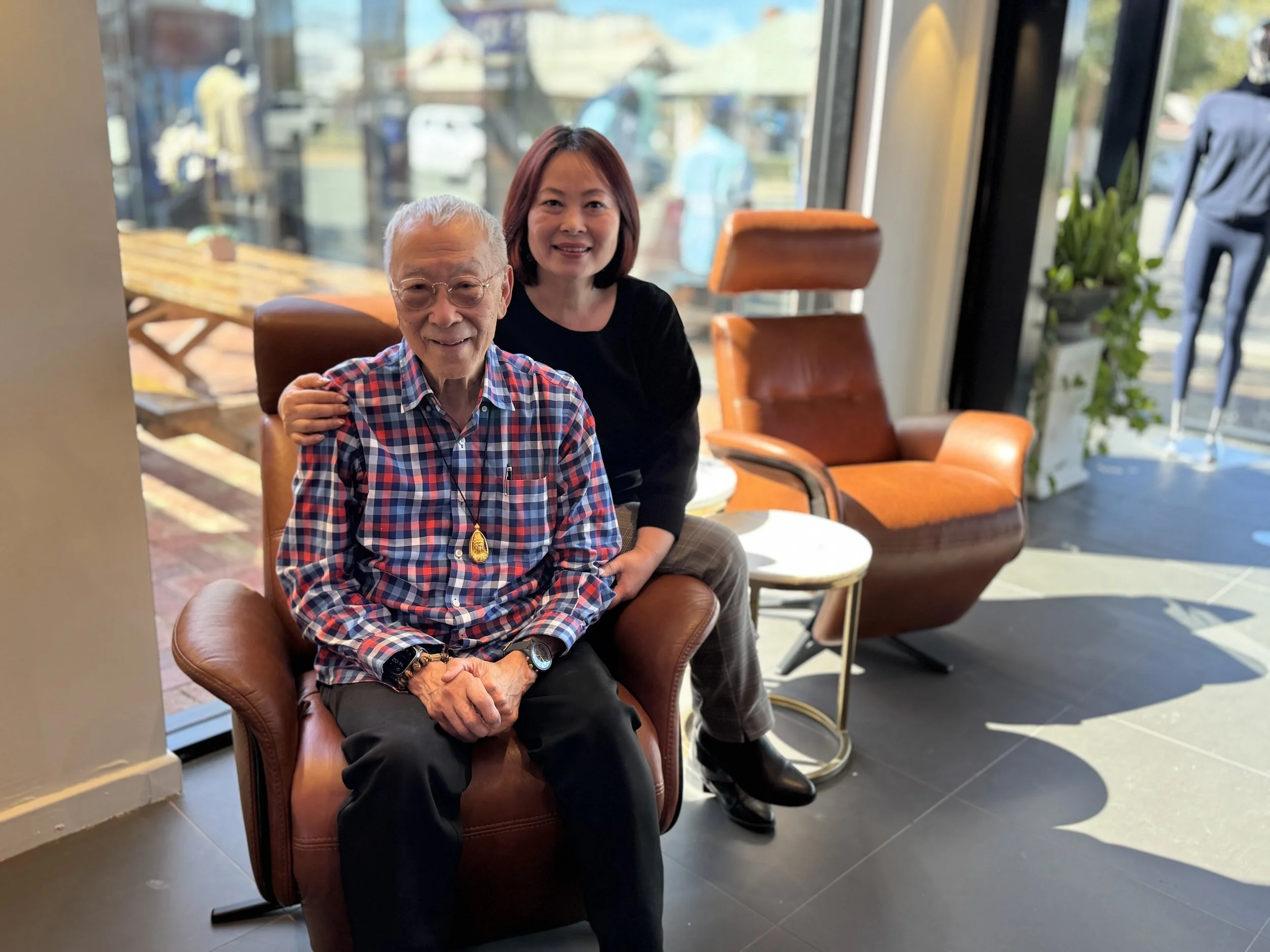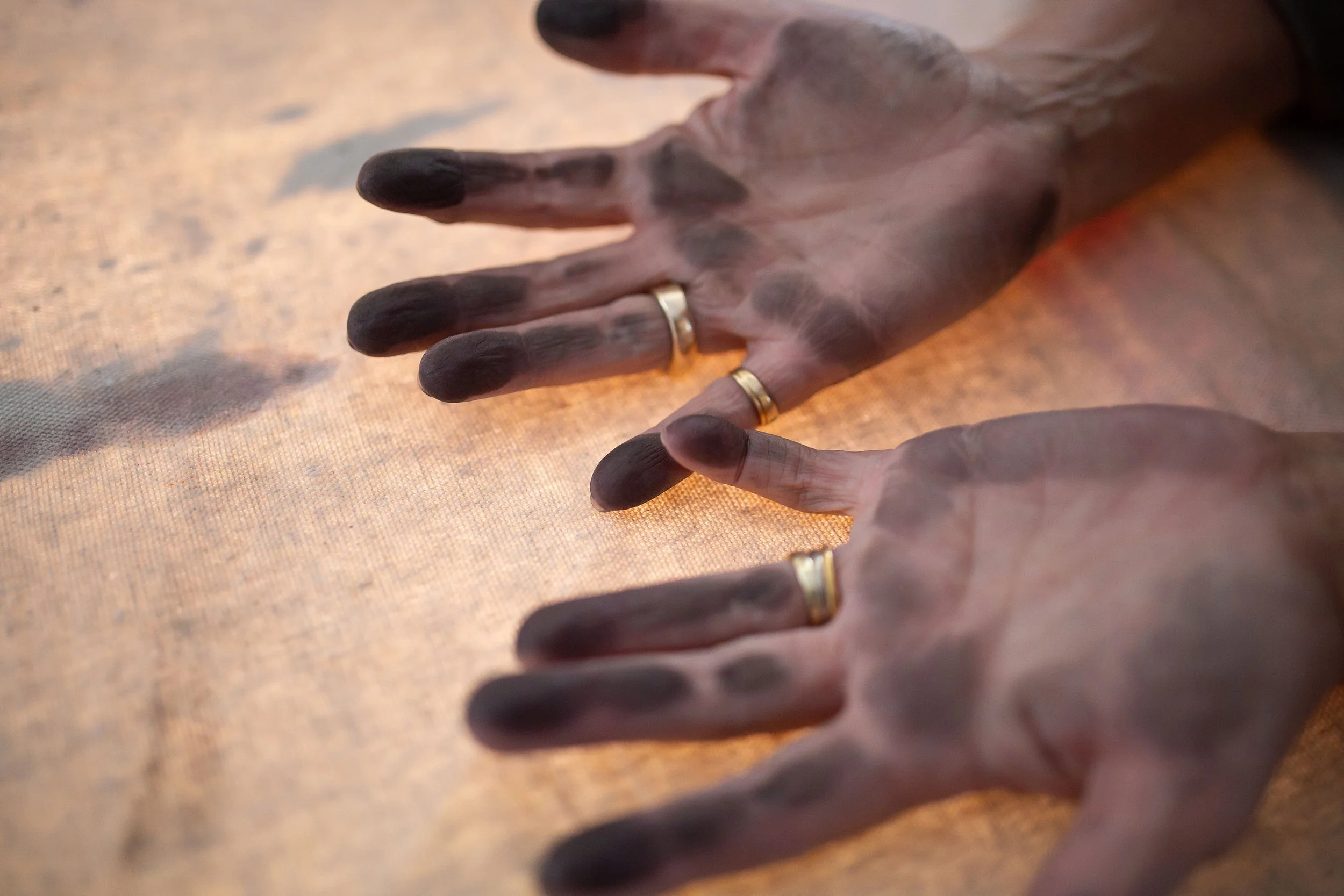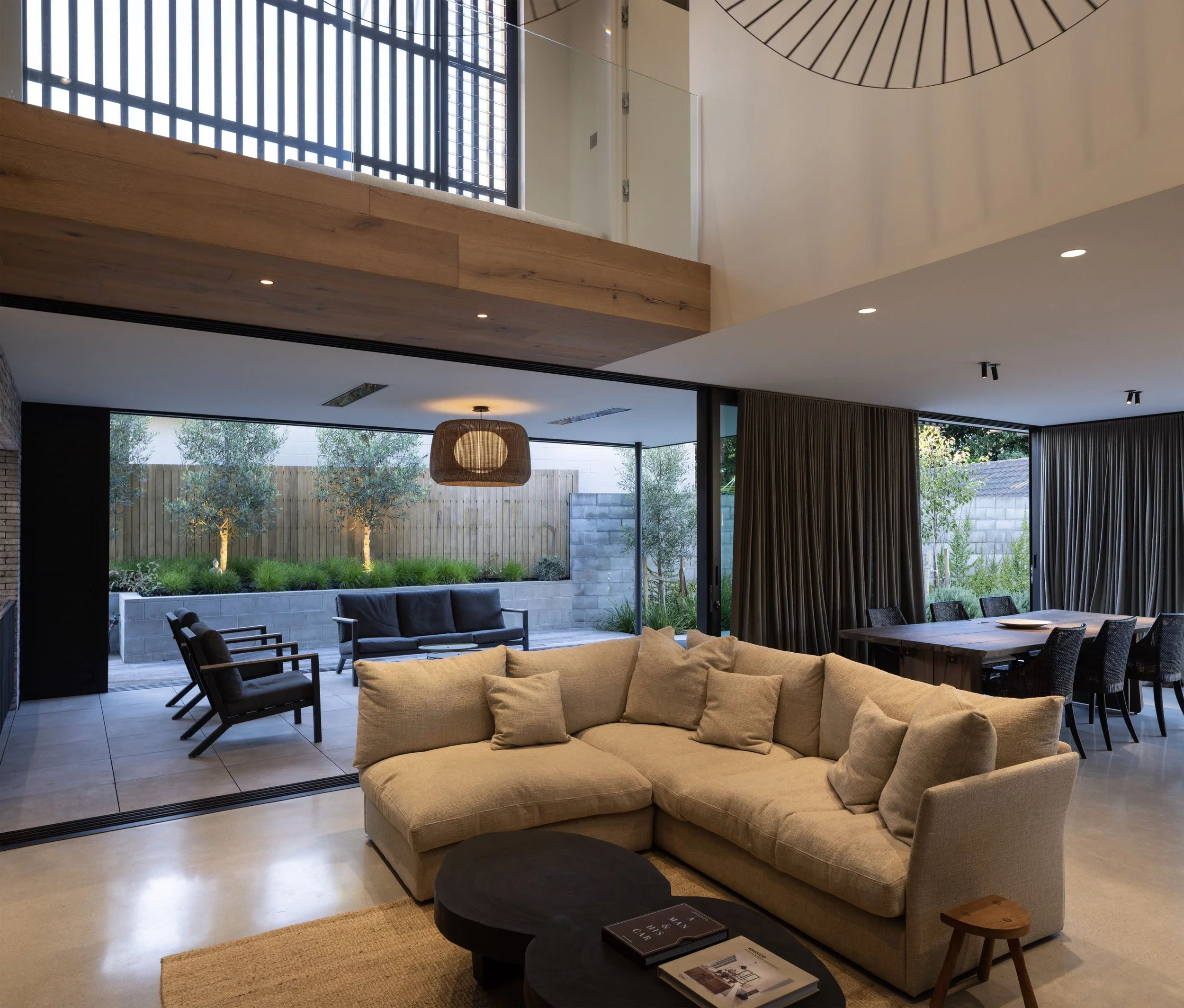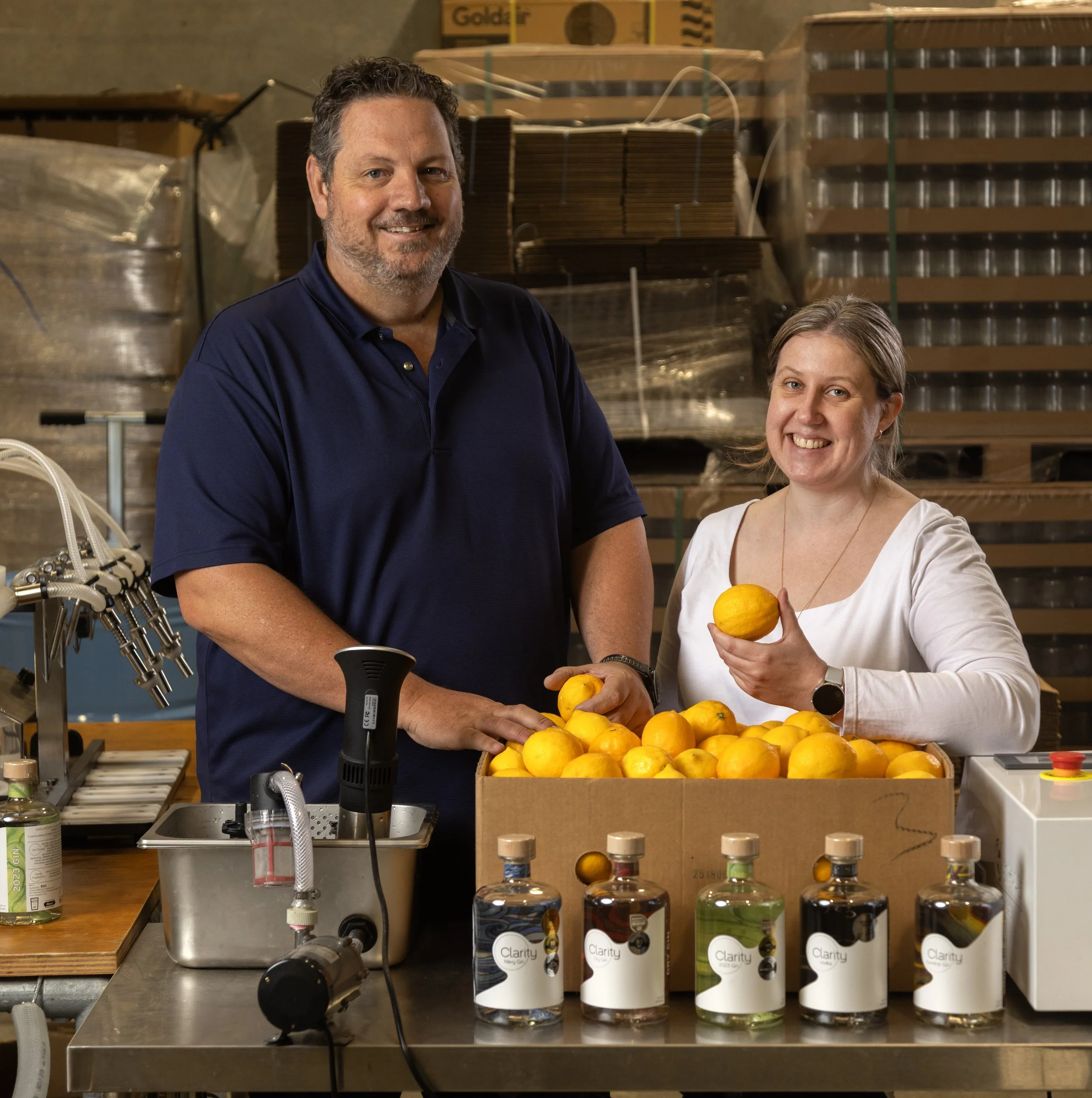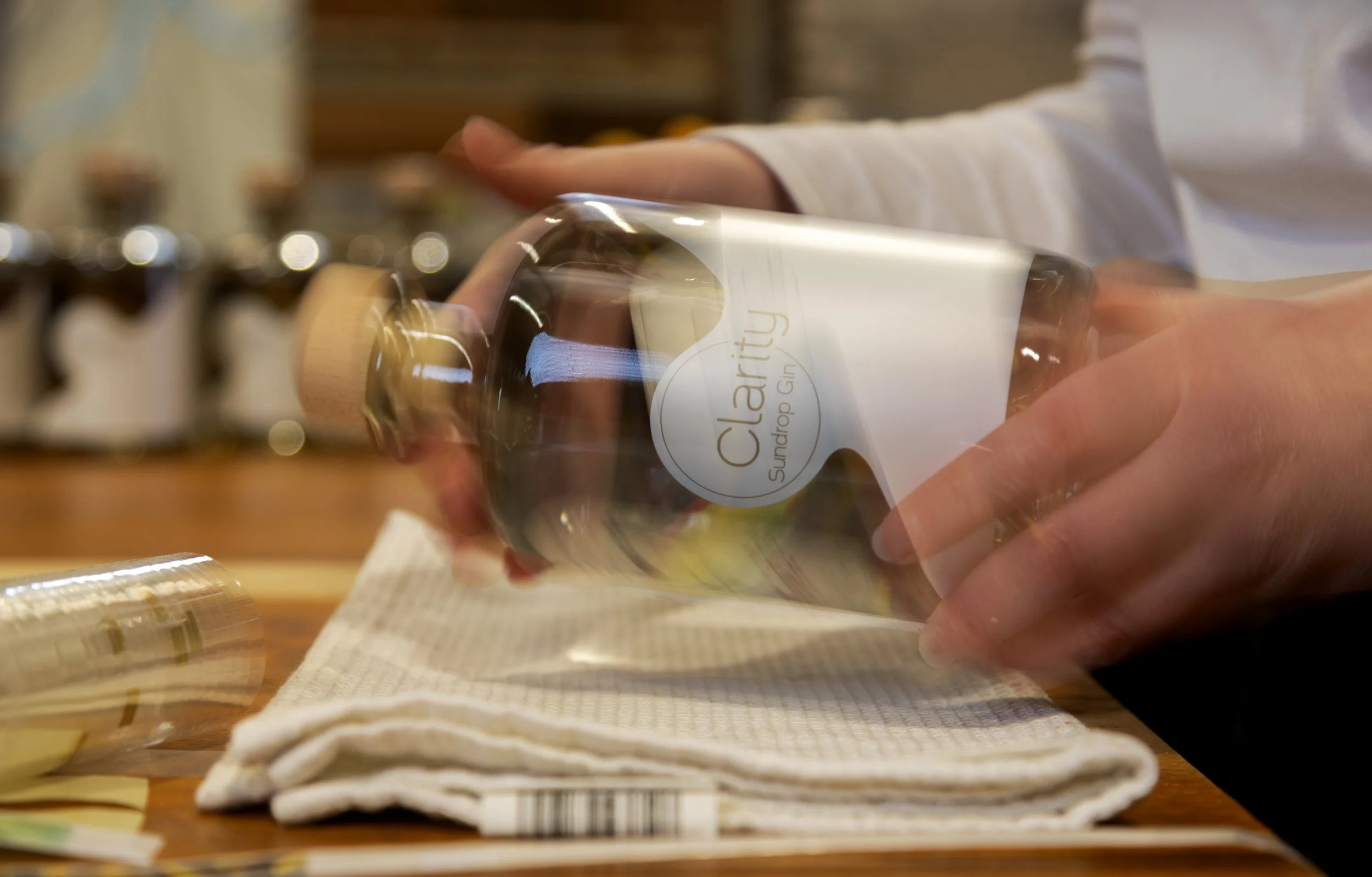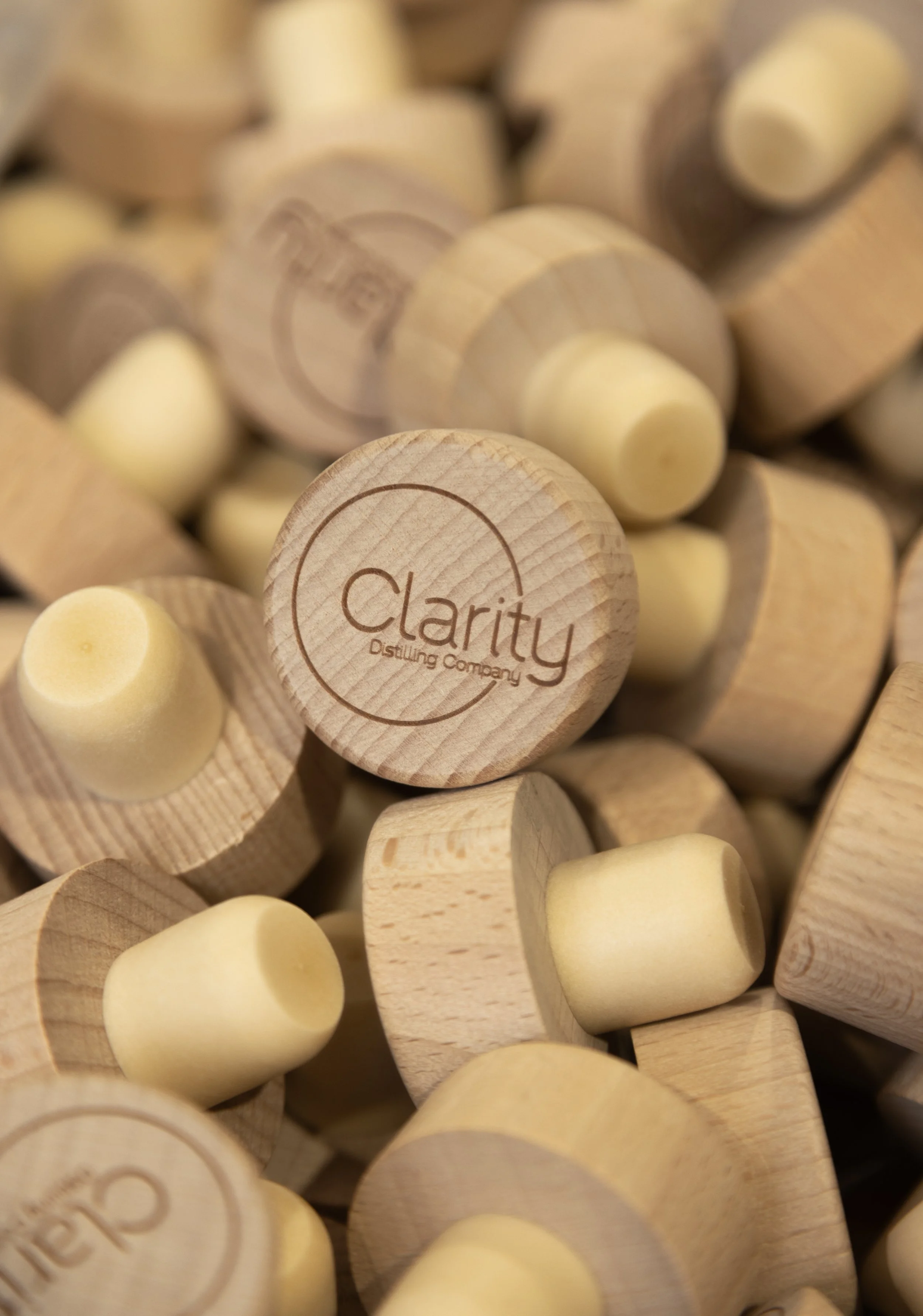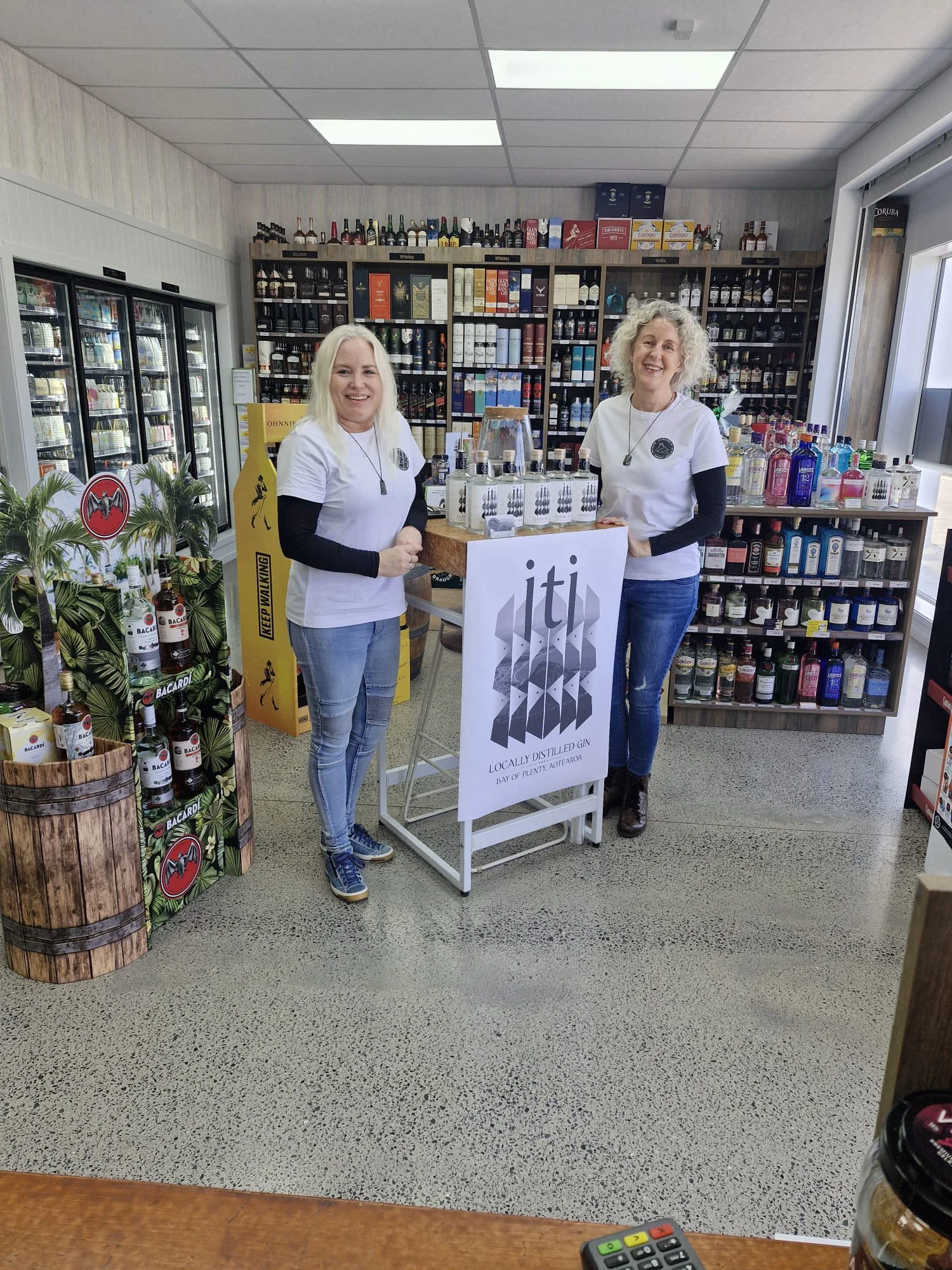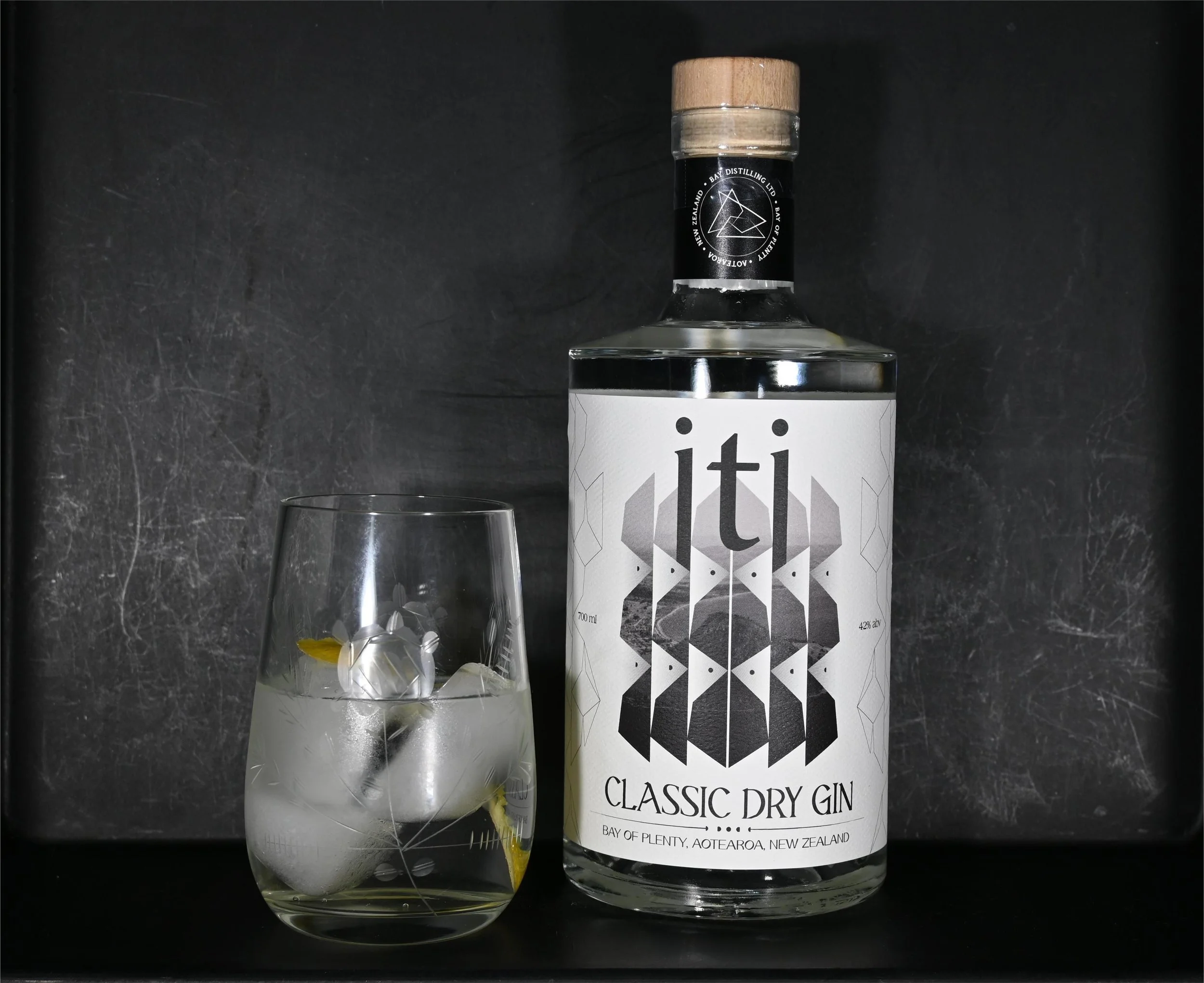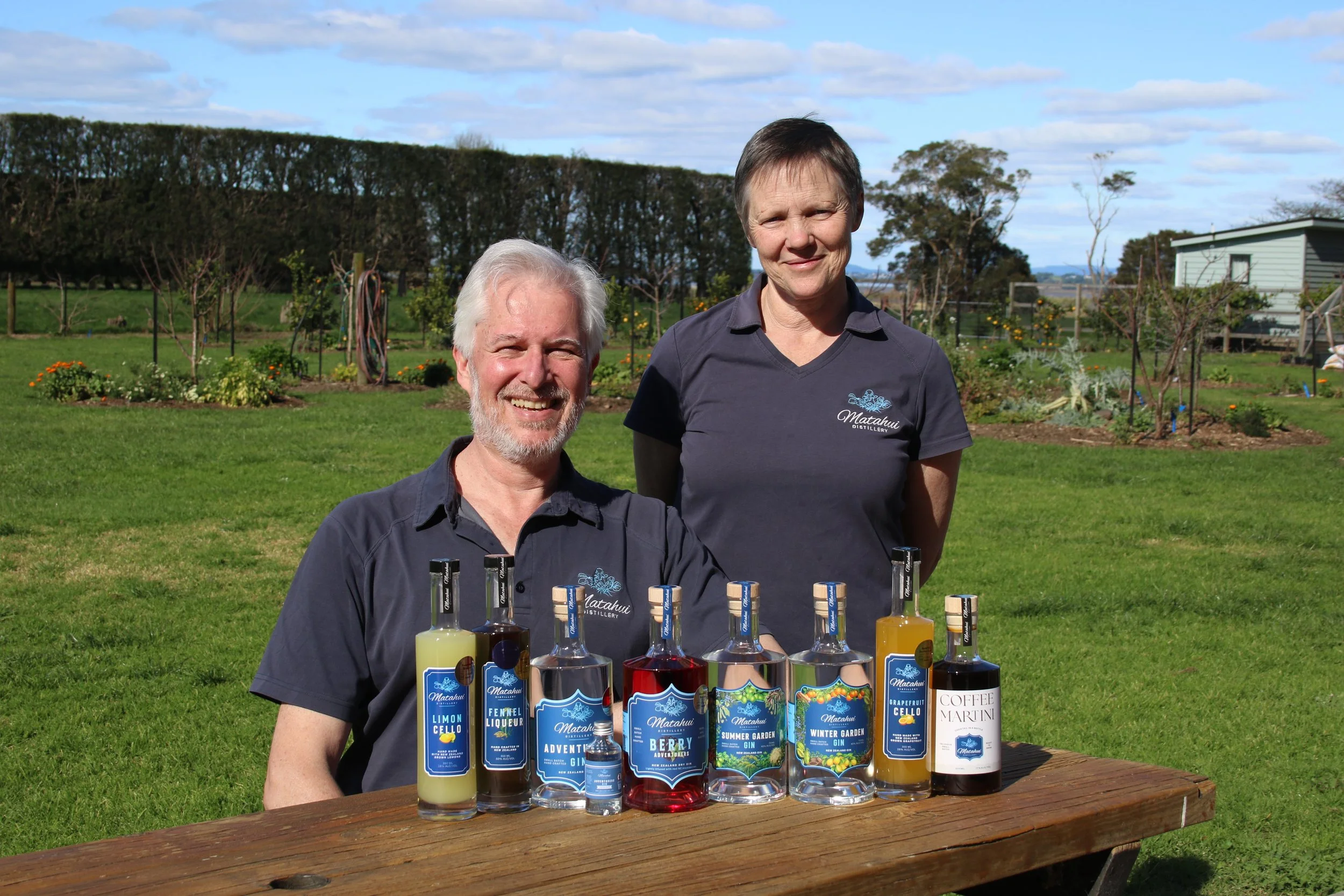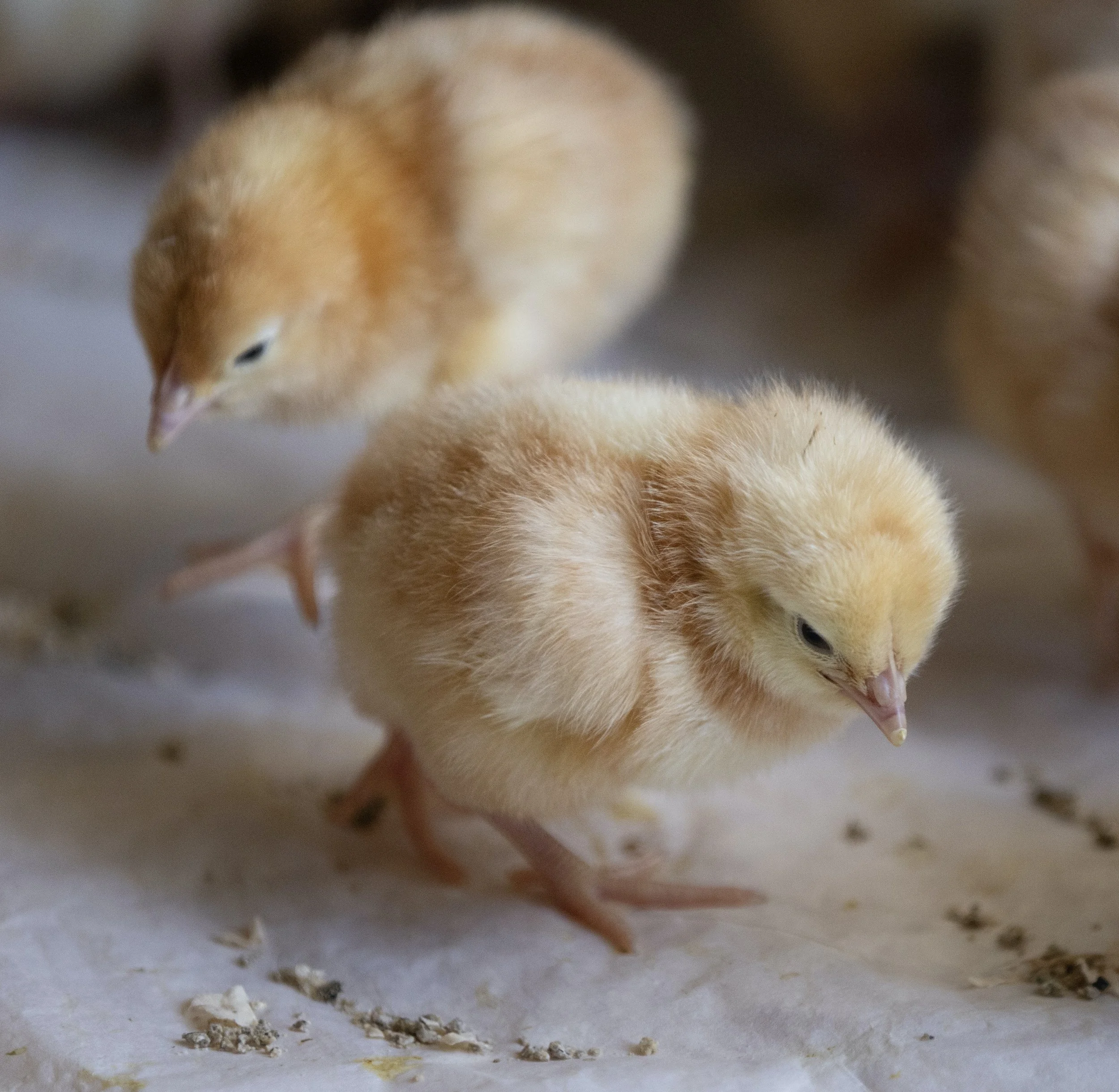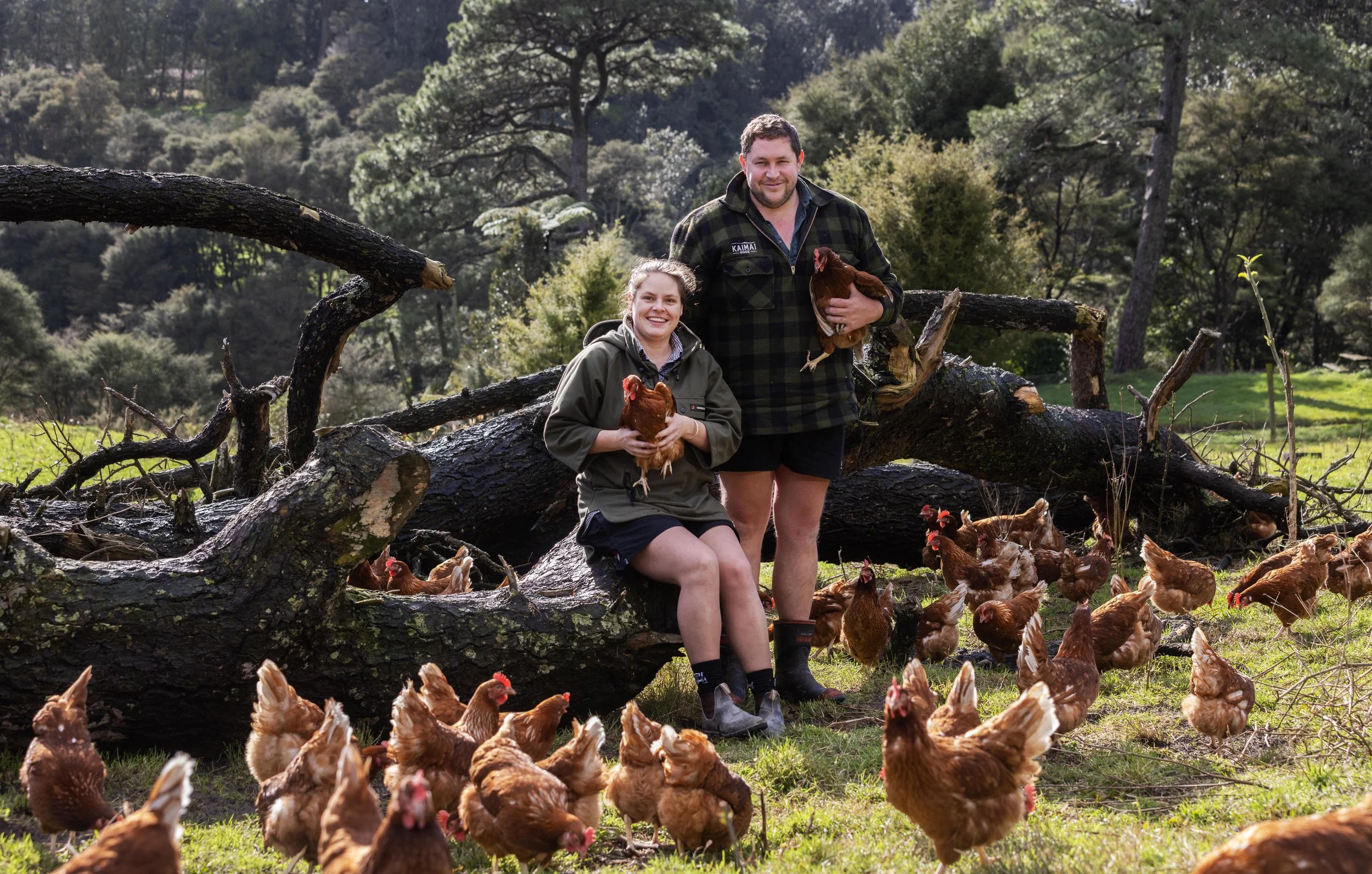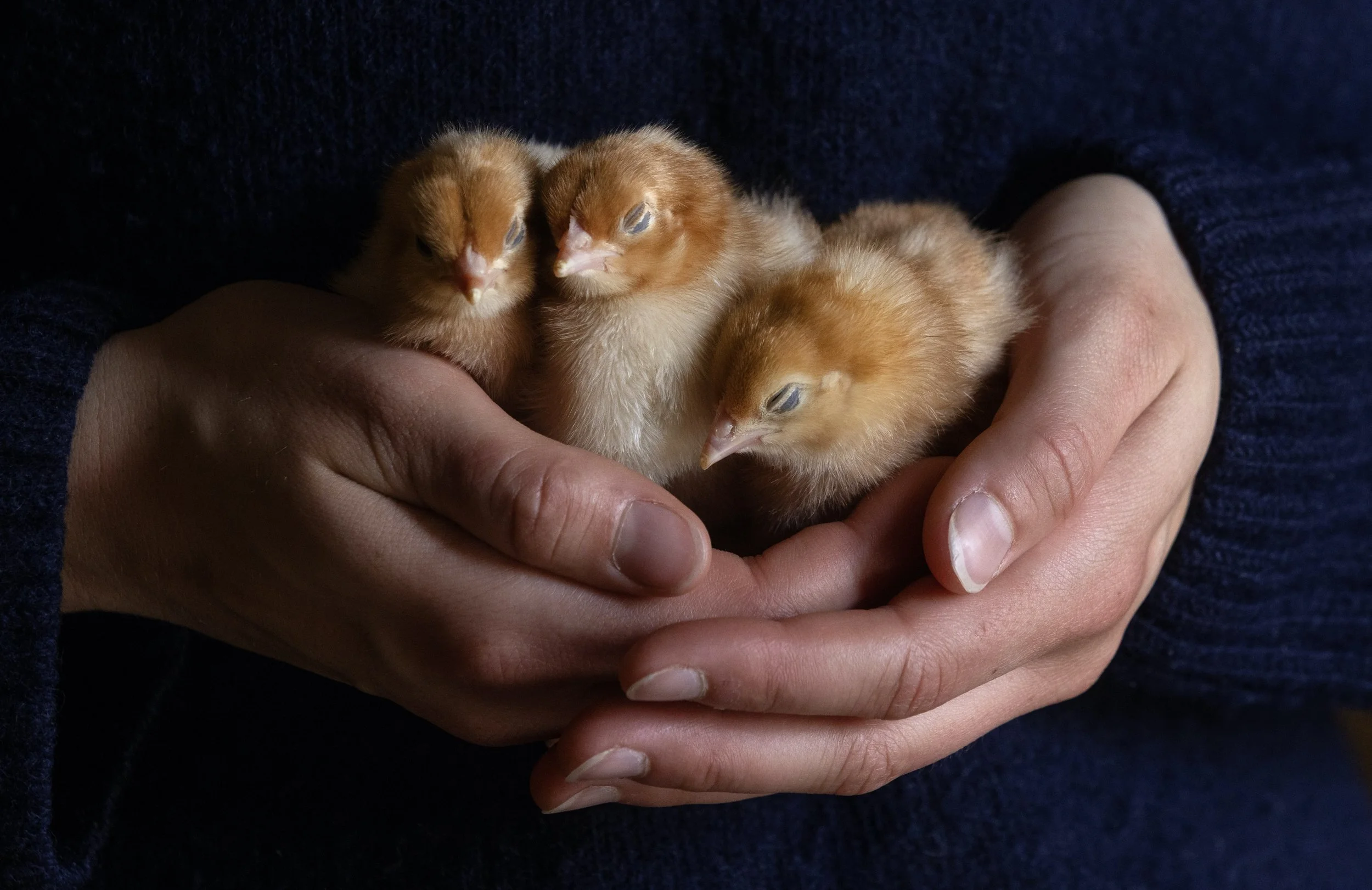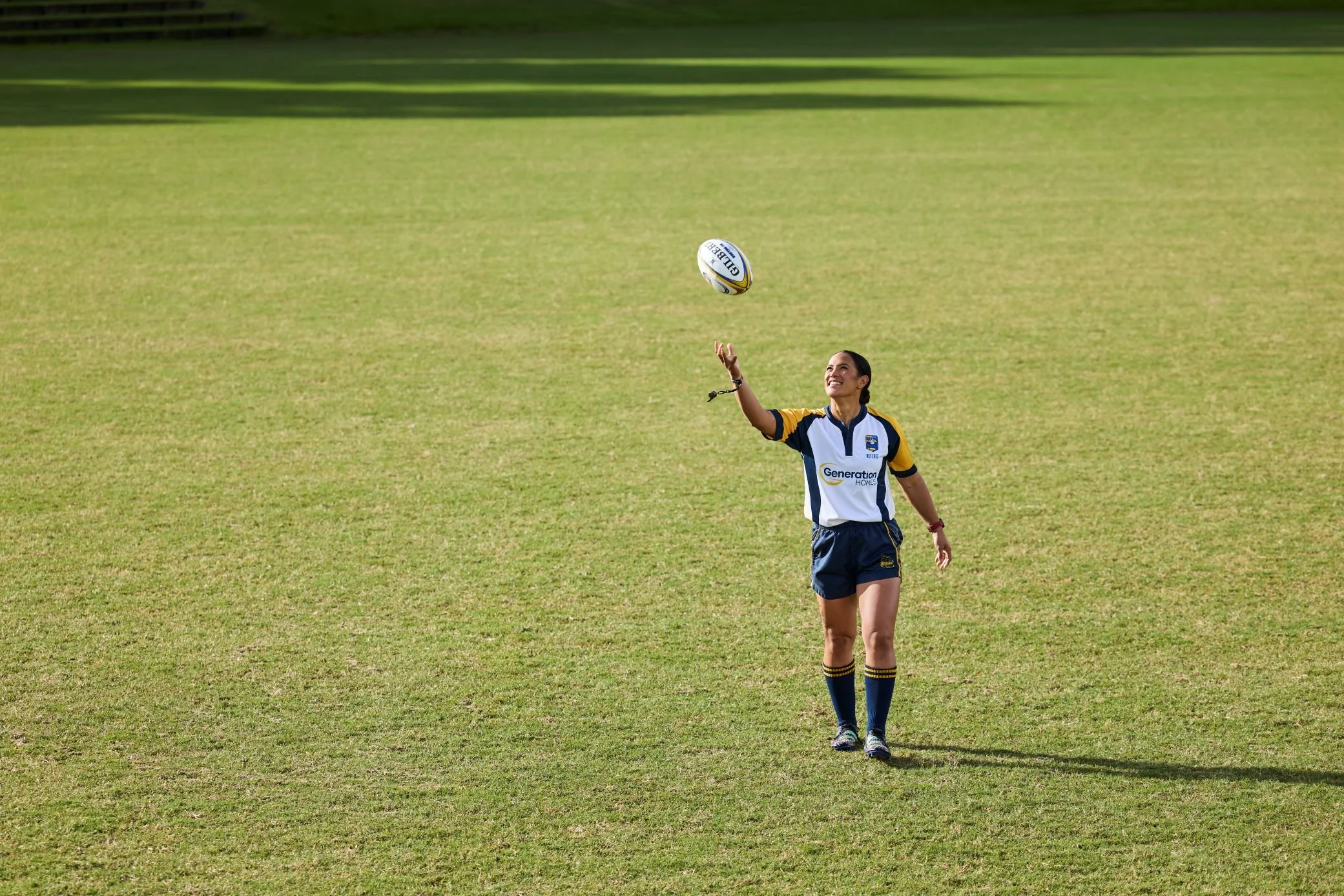Blooms with heart
Melissa Cox has opened her lush Pāpāmoa garden, to provide local brides with budget-friendly blooms that are all grown with love.
Melissa Cox has opened her lush Pāpāmoa garden, to provide local brides with budget-friendly blooms that are all grown with love.
WORDS JO-MARIE BAKER | PHOTOS KATIE COX
Flowers add a glorious touch to weddings and other special occasions but can often set you back thousands of dollars.
That’s why avid gardener Melissa Cox is now offering an affordable alternative by launching a new business called Pāpāmoa Pick Your Own Flowers. Here you can help yourself to as many blooms and as much greenery as you can carry for just $100.
Dubbed ‘the little garden with a big heart’, Melissa wants to help those who cannot afford traditional florist services.
“I love florists but I remember how stressful it was to not only plan a wedding, but to pay for it. I’m filling a niche for people who don’t have the money in this economy but still want pretty flowers for their wedding, baby shower, birthday, tangi or corporate event.
“I firmly believe in community and helping each other out. I’m already growing flowers in my garden, so if you need them, take them.”
Melissa also goes the extra mile to make flower picking a special experience by playing relaxing music and serving cold drinks and biscuits. “People just need to bring their own buckets. I’ll provide scissors and garden gloves,” she smiles.
Only two bookings per week are available between October and April, to ensure there’s enough flowers to go around. Brides-to-be can bring up to three helpers with them, and have a maxiumum of one hour to pick whatever they like from Melissa’s home garden.
“My favourite are lilies because they’re just like starbursts of happiness. Calla lilies were my wedding flower, and royal lilies are incredibly fragrant. I really love ferns too, so I have several kinds growing here. I love everything that looks whimsical.”
The scent of lavender greets everyone who visits this standard residential-sized garden. But in spring and summer it’s bursting with dahlias, hydrangeas, carpet and long-stemmed roses, gerberas, gladioli, statice (sea lavender), African daisies, flowering herbs and every shade of green foliage imaginable. “I have lots of random wildflowers everywhere too. I never know where they’re going to pop up!”
People are welcome to visit in autumn and winter also, where for a discounted price of $75, they can pick any greenery they like along with long-stem lavender, African daisies, pink camellias and flowering jade.
While most people are happy to assemble their own bouquets, vases or table arrangements at home, Melissa can whip up a bridal bouquet for $50 or a bridesmaid bouquet for $25 if floral arranging isn’t your forte.
“My mum was an interior decorator and a dried flower arranger who ran her own gift shop. On the side she also did fresh flower bouquets to order, so she taught me how to do a good job of arranging a bouquet.”
Melissa can also source affordable supplementary blooms or specific colours that people might require from other local growers. “There is a wonderful dahlia grower in Tauriko who I partner with. For $25 I can have a bunch of high-end dahlias waiting here for you in whatever size or colour you want, depending on the season.”
Melissa developed her garden from scratch during Covid lockdowns after buying her Pāpāmoa home in 2020.
“I garden for therapy. It’s proven to be good for you. Serotonin, your happy hormone, increases when you’re in the sun, in the dirt, and connecting with nature.”
Melissa’s secret is to water regularly and feed the garden heavily with fertiliser. She never uses pesticides, instead spraying plants with neem oil and apple cider vinegar to keep bugs and diseases at bay.
“Unless it’s a drought, things will flower. Because when you cut them back, they want to flower more. I grow a lot from seed and from cuttings from friends. I’m installing new flower beds at the moment because of the interest in this business. I’m planning to put in more hydrangea -really cute little ones that are white. And more wildflowers because they reseed themselves.”
Melissa’s goal isn’t to make money from her new business. “The only reason I charge is to help pay for my fertiliser. I hope this garden can help a lot of people.”
A legend lives on
Sir Gordon Tietjens is busy creating a new legacy off the field.
Sir Gordon Tietjens is busy creating a new legacy off the field.
WORDS NICKY ADAMS | PHOTOS ALAN GIBSON
“I built my teams based on traditional values, honesty, respect, humility... all the qualities you need in an individual. Then you had to create the culture. You want to pick players that are prepared to roll their sleeves up and work hard. Because that’s the Sevens game.”
While Sir Gordon Tietjens is clearly discussing the attributes needed in an elite sportsperson, there’s a direct alignment with the qualities needed to build a solid business. After an exceptional career spanning 22 years of coaching the All Black Sevens team (while simultaneously working at Bay Engineering Supplies), Sir Gordon left a legacy in this field that most New Zealanders would agree has been unparalleled. He has, however, more recently found his niche in another sports related arena. In 2019 he was approached to become brand ambassador for Legend Sportswear; he jumped at the challenge of this new opportunity but quickly realised that it was something to which he could add not just gravitas, but also his expertise. As with everything he does, rather than being a figure head, this is a ‘boots and all’ role.
Player from Rotorua Primary School wearing Legend Sportswear.
The Legend Sportswear brand had only recently established itself in apparel when Sir Gordon came on board. It had already been successfully operating in garment manufacture since 2004 from its dedicated factory in Shanghai. When Mandy Qi and Looi Tan, the Australian owners, decided to move into sportswear, they first targeted the Pacific market, quickly making firm inroads into the sports circles of Australia and Fiji, securing the apparel supply for the Newcastle Jets in Australia and the Fiji rugby league team to go to the World Cup. Coming on as brand ambassador, Sir Gordon straight away immersed himself in the role — representing, speaking and promoting the brand. However, it wasn’t long before he saw that here was a gap in the New Zealand market, and one that Legend Sportswear could fill.
Australian owners of Legend Sportswear Mandy Qi & Looi Tan.
“I saw a real opportunity to build and grow our brand,” says Sir Gordon. “Two of us started up, my current office manager Amelia Tagica and myself, and straight away we contracted three sports clubs in the Bay of Plenty. It’s just grown from there. We’ve now got an office here, three graphic designers and three administrators.”
Initially concentrating on sportswear, Legend is now the choice for adults and children across multiple sports disciplines, plus school sports and even school uniforms.
For a person with a public persona, becoming the name - and face - of a brand is layered. Of course, the exposure is there from the offset, however, there is a definite responsibility to the public that the product lives up to the endorsement. There is no question in Sir Gordon’s mind that Legend Sportswear is more than worthy of having his name behind it. He knows that Legend’s core values align with his own - trustworthy, affordable, high-quality and exceptional customer service.
“I see more than anything that you need to build relationships, and within that relationship you build trust. That to me is the real key,” he explains. “That’s what it’s all about. If you want to build the brand you build it around being professional and being right up there and competing with the best... Being a new brand we’ve got to prove ourselves. That’s what we’ve been doing, and we’ve seen the growth.”
The quality is, of course, important. Without doubt there are aspects to the construction process that Sir Gordon is very proud - sublimation (a technique where design is transferred onto the fabric) being one. Another is their ability to be flexible and make changes to the stock design, plus a high level of sustainability; something the company stands behind.
Of huge importance too is the process itself. “One of the real benefits is that we provide the opportunity for our customers to come in and sit with our graphics team to do their own designs... You might spend a couple of hours, but your designs are approved and set and away you go.”
Add to this the efficient rollout: “A big positive for us is the delivery. Our times are really good,” he adds. “We’re looking at four weeks, sometimes three, from the confirmation of the artwork being approved and the order being placed.”
I wonder how Sir Gordon’s background and expertise plays into the whole process. “I suppose because I’ve been immersed in sport, coaching the All Black Sevens for 22 years, and I’ve been involved in the different apparel companies. I know the expectations of what an athlete wants and what’s good and what’s not. And I’m putting my name next to a product that excites an athlete, that they really want to wear and
that’s good quality.”
As a home-grown Bay of Plenty native, Sir Gordon holds his authenticity and the value of personal service dear, which is why when the product arrives, it’s in a van being delivered by Sir Gordon himself.
Beyond the surface
Artist Jacki Barklie fuses emotion and bold experimentation to create striking, unconventional works.
Artist Jacki Barklie fuses emotion and bold experimentation to create striking, unconventional works.
For over three decades, Jacki Barklie has explored the delicate interplay between human connection and identity through both her creative professions, first as a hairdresser and now as a multi-disciplinary artist.
With roots in Africa and a passion for the psyche, her work delves into themes of fragility and desire, often expressed through mixed media, printmaking, textiles and photography.
After completing a Bachelor Degree in Creative Industries, Jacki embraced experimentation and introspection, creating art that pushes boundaries and celebrates the unconventional. Here she shares insights into her process, and the emotional resonance behind her evocative works.
UNO: How did your creative background in hairdressing shape your approach to art today? Jacki: Hairdressing trained my eye for form, texture and design. It was sculpture in motion. I treated hair like fabric, shaping and layering with intention. Competing creatively honed my skills, but it was always about the human connection. Listening to people and understanding their emotional relationship with aesthetics now flows into how I create and share my art.
You were brought up in Africa. Can you share a specific memory or cultural influence that continues to inspire your art? Africa lives in my bones. There, creativity comes from what’s at hand, such as clay, dyes, dust, fabric. That bold innovation still inspires me. I remember painting with earth and watching patterns emerge from chance. Sometimes, I feel you can almost smell African dust in my work. Its textures, warmth and raw energy continue to guide my hands.
What was the turning point that led you to pursue a Bachelor Degree in Creative Industries later in life? After 37 years in hairdressing and countless night art classes, I craved full immersion. I didn’t want a traditional fine art degree. I needed one that embraced creative risk. The Creative Industries degree was a perfect fit for me. I’m a multimedia artist whose work evolves from one material to the next.
How do you decide which medium, whether acrylics, textiles, printmaking or photography, best suits the idea or emotion you’re trying to express? It starts with a feeling or story. From there, I follow the materials that speak to that idea. I explore the tension between materiality, light and shadow, stillness and movement. Whether I choose textiles or ink, the medium must hold that emotional vibration. It’s instinctive, process driven and always rooted in intention.
What role does experimentation play in your creative practice? Experimentation is everything. I’m a curious artist drawn to risk and discovery. I often research ancient methods and remix them with contemporary techniques. I love when the unexpected happens, like when a material surprises me. That’s where the magic is. Every piece starts as a question, and sometimes the answer comes through failure.
How do you think our environments shape our emotional or psychological states? We’re deeply shaped by our surroundings. My art often reflects the fractured rhythms of the world and offers a kind of stillness in return. I explore contrasts in form, reflection, old and new, raw and refined. Within these tensions, I find beauty. My work invites presence, asking viewers not just to look, but to feel.
As someone who celebrates the unusual, what draws you to the unconventional or unexpected? The unexpected excites me – it’s alive and full of truth. While I admire tradition, I often find it too familiar. The unconventional feels raw and present. It’s not trying to be anything but itself. That honesty inspires me. It challenges the rules, breaks them if needed and that’s where true innovation begins.
How do you stay true to your raw, emotionally-driven approach? I know my “why.” I show up in the studio daily and follow what feeds my soul. I let the process guide me, not trends. I create art that moves me first, trusting that it will resonate with someone else. If I had to make formulaic work, I’d lose the heartbeat. Emotion keeps it alive.
What advice would you give to someone wanting to explore their creative side later in life? Start now. But take it seriously. Don’t shrink yourself to ‘just crafting.’ Be brave, be messy, try everything. Follow what excites you. Let failure be part of the fun. You’re never too old to become who you are creatively meant to be. The second half of life is the perfect time to rediscover yourself.
How long have you been in the Bay and what do you love about it? We’ve been in the Bay for 27 years. It has been our longest home since emigrating twice. The weather drew us in, but our friends and pace kept us. My husband is my rock, and our home is a sanctuary. Our grown kids are flying, and I’m living the dream with my studio, surrounded by light, love and space to create.
Jackie is holding a solo exhibition titled ’SURFACE TENSION' from October 24 to November 2, celebrating her new body of work.
A decade of dapper
Bond & Co celebrates a decade downtown, and the timeless art of tailoring.
Bond & Co celebrates a decade downtown, and the timeless art of tailoring.
WORDS Nicky Adams | PHOTOS Jahl Marshall
Jason Dovey is marking 10 years under the Bond & Co brand with a stylish new store refit. Of course there will be other celebrations rolled out, but the milestone of achieving a decade in the business of bespoke menswear and tailoring is one which he doesn’t take lightly.
Starting in the trade as a teenager in 1987, Jason has been in Devonport Road since 1992. In 2015 he opened his own store, specialising not only in bespoke tailoring, but also made-to-measure and carefully-curated off-the-rack pieces. After 10 years, he would probably consider that he has risen to the challenge he undertook when he made the decision to bring an upmarket menswear store to downtown Tauranga. Walking into the recently completed refitted store, the brighter, lighter feel is immediately apparent. Ushering in a new era, the interior has a sleek, modern finish, while still retaining the personalised feel for which Jason and his longstanding trusted team of wife Michelle, Chris, Marie and Jack, are known. Head towards the changing rooms at the back, and customers can sink into a leather armchair next to a fireplace while they consider their options.
It’s an exciting time to be in men’s apparel, where beautifully cut and styled menswear is increasingly celebrated as more than equal in impact to women’s fashion. With this recognition comes a greater ability to bring pieces to the market that Jason understands his clients appreciate.
“Since Covid our local suppliers have introduced international brands to their businesses as a way of going forward, so we’ve been able to source exciting, quality menswear pieces that are totally unique,” says Jason.
He brings out a selection of stunning shirts; one from R2 Amsterdam, another from Guide London who specialise in a sophisticated range of coordinated shirts, blazers and pants. A Fish Named Fred is a label that excels at patterns, reflecting the demand for pieces that are individual as well as stylish. The last one he shows me is a classic shirt from Florentino, an Italian brand; beautifully cut and detailed, crafted from high-quality fabric, which epitomises sophistication.
When showcasing his latest collection, it’s clear that for Jason his customer base is always front and centre in his consideration. He agrees: “We’re relationship based; it’s the personal touch that we want to deliver. We’re not a shopping cart business; we want face to face communication with customers in store.”
This also plays into another key aspect of the business. “The most important part is the fit of the clothes,” he adds. “People get put off when they pull something off a rack and it doesn’t look good. But our expertise is helping find the pieces that will work, and making sure every well-dressed man looks good.”
The connection with customers and the community is pivotal. Jason reflects on the fact that one aspect of the industry that keeps him invested (for which he is incredibly grateful) is the loyalty and support of his customers, both longstanding ones (some of which have been shopping with him for 30 years), and new. As we discuss the value of supporting local business, Jason laughs. He mentions that James Ashcroft, the internationally acclaimed movie director (who coincidentally was a recent UNO cover star) had come to him for tailoring prior to moving to New York to shoot his film with Robert De Niro. He then popped back in for more pieces on a whistlestop trip home. “Funny to think he’s shopped here for clothes to wear in New York,” he says.
I ask whether the past 10 years has seen a change in customer shopping habits. “Yes, absolutely. Men are undoubtedly more adventurous in what they will wear and what they’ll be styled in.” It’s refreshing to see more men embracing what a well-cut suit can do for not just their wardrobe, but also their confidence. The beauty of menswear is that pieces tend to be style, rather than trend driven, and the changes that happen are subtle and slow. I wonder if there’s anything currently influencing new looks. Jason points out that trousers have reverted to a classic straight leg rather than skinny, lapels have started to get fractionally wider, but quite exciting he says, is the slow evolution of the double-breasted jacket. “We haven’t seen it for about 30 years, and there’s been a few attempts to revive it. But this time I think it’s going to stick.”
With event and wedding season just beginning in earnest, Jason and the team are already seeing a buzz around tailoring, with some customers often finding either celebrity driven pieces or outfits on Instagram that have caught their eye. With events forming an important part of the business, Bond & Co know how to transform someone’s inspiration into reality, starting with that perfectly-cut suit. There are other ways to bring to life a look though, as Jason says: “It’s all in the detail. Pocket squares, buttons, collar stitching, neck trims – these are the things that are impactful.” And finally colour; even through the cooler months there’s a demand for lighter toned jackets. And for a final take away, “New Zealand has changed,” reflects Jason. “Don’t be afraid to express yourself.”
A fine balance
YOU Travel’s Brenda Stephen experienced sensory exhilaration and soulful serenity on a recent Uniworld trip: India’s Golden Triangle and the Sacred Ganges.
YOU Travel’s Brenda Stephen experienced sensory exhilaration and soulful serenity on a recent Uniworld trip: India’s Golden Triangle and the Sacred Ganges.
WORDS Liz French
The spectacular Taj Mahal.
How to compare the experience of sunrise at the Taj Mahal with that of visiting the Calcutta Rescue Centre that supports children from the slums? “Wonder and awe for one and touched at the heart by the other,” says Brenda.
This is India, land of colour and contrasts, pace and peace. Uniworld’s tour delves right in by pairing the classic golden triangle of New Delhi, Agra and Jaipur with visits to rural communities off the beaten track. This provides a fine balance between the experience of huge cities with fabulous hotels and that of cruising the Ganges, mooring at villages seldom on travel itineraries.
The trip begins on land with five luxurious nights in the Golden Triangle, staying in Oberoi hotels. Each property exudes its own distinct personality and sense of place which delighted Brenda. “Agra’s Oberoi Amarvilas has a view of the Taj Mahal from every room and is just 600 metres from the Taj itself,” she explains. “Rose petals wafted from the roof as we arrived at Jaipur’s Oberoi Rajvilas, which is set around an ancient Shiva temple on 32 manured acres.”
The hotels are oases of calm after daily excursions by tuktuk, rickshaw or coach, with local guides, where you embrace the unique architecture, atmosphere and culture of each destination without worrying about the logistics.
Five-star floating
Then it’s onto your floating hotel after a flight to Kolkata to embark Uniworld’s Ganges Voyager II, the last word in riverboat luxury. The boat holds 56 passengers, 36 crew and colonially inspired suites with vantage points for watching the light over this everchanging river, sacred and central to life in the fertile and densely populated Ganges Delta.
This is home for the next seven nights. While the ship sails gently up the Ganges you settle into serenity, sip cocktails on the deck, dine on an Indian and international menu with ingredients from the local villages you visit enroute and even learn Indian culinary skills in cooking demonstrations. Informative nightly talks prepare you for your daily adventures, which include a river port dating to 1809 with magnificent Hindu temples, an authentic artisan market in a riverside village and the “Garden of Happiness”. Local guides complement the vast knowledge of the onboard experts.
Happiness is also wellness on the Ganges Voyager II, with daily yoga classes on the sundeck and Ayurvedic spa treatments and massages. “Very soothing after a day’s sightseeing!” Brenda enthuses.
At YOU Travel and Cruise the experienced staff are not about enabling you to simply tick off your bucket list. The question, “What do you want to get out of it?” is as important as, “Where do you want to go?”
If India really appeals, but you are a little apprehensive, and if you want to revel in its infinite variety without sweating the small stuff, group travel is the answer. Uniworld’s boutique itinerary exposes you to India’s myriad of sights, smells and sounds while providing a peaceful refuge to recover and recharge ready for the next foray into the unknown, with every detail thought of.
While this journey only covered a small corner of India, it has whetted Brenda’s appetite for more. “Because I was with a group, I did not find it daunting, quickly becoming comfortable with India’s ‘normal’,” she says. “Despite the luxury aspect of this tour, a big takeaway for me was the spirituality of the people and the joy in simplicity,” she says. “India is like Africa. It gets under your skin.”
Hide and chic
With its bespoke, crafted solutions and radical service, Sorrento Shutters is bringing a timeless elegance to homes across the Bay.
With its bespoke, crafted solutions and radical service, Sorrento Shutters is bringing a timeless elegance to homes across the Bay.
Kane Burton-Brown still remembers the moment shutters first caught his eye. He was walking down a quiet street in London during his OE, when he noticed the sleek look of his neighbour’s bay window. The clean lines and the way the light was filtered made him stop. There was something different about it. Then he realised: it was the shutters.
“I remember thinking, ‘I really like that,’” he says. “It was the first time I’d properly noticed shutters and thought, ‘One day, I want those in my own home.’ After that, I started seeing them everywhere. They just stood out. They’re beautiful, they’re aesthetic and elegant, and they're very practical in terms of functionality in dealing with light control and privacy.”
It was this random observation that opened his eyes to the window treatments industry and led him to almost a decade helping people achieve that same mix of sophistication and utility that shutters offer. Eventually, this path led Kane to start Sorrento Shutters last year, a company he’s built on his belief in beautiful craftsmanship and genuine service.
“I wanted to bring something to the market where I was comfortable and felt good about what I had to offer,” he explains. “For me, that was the best high-quality shutters and blinds that I could find paired with what I call ‘radical service’.”
With a smile he admits that, “people are kind of funny with that word radical,” but Sorrento is built on the idea that providing excellent service is radical in our current environment, where downsizing and cost cutting tends to affect the customer experience.
“It’s actually hard to find good service. And I believe good service starts with listening.”
After communicating their vision, Kane assists people through the process to achieve it, helping them with things like colour selection and material of the shutters.
“We do guide them because most people just know they love shutters. They’ve seen shutters in their friend’s home or in a neighbour’s home and they know that they’ve loved the look, so we help them navigate all the options,” he says. “The process is clear and friendly and designed to keep clients in the loop so that they have a clear idea of exactly what’s on offer and exactly what they’re buying. By the time we’ve left, you will know exactly what we can offer you and you will know exactly what it will cost.”
You also know that you’ll be getting the highest quality product and craftsmanship. All of their work is bespoke.
“All of our products are custom-made to fit flawlessly. That's part of the elegance of it. Everything just fits beautifully. It’s designed to get that perfect end result.”
But shutters offer more than a striking elegance. They open up spaces, improve comfort, and don’t take up all the wall space, unlike curtains, with Kane saying that “they make a room feel larger, and create that luxury designer effect.”
There are also the remarkable insulation benefits and reduction of condensation, with Kane quoting a 50 percent improvement over blinds. It’s a massive difference, and one he says comes up all the time in the company’s client feedback. This impact is something he’s also noticed in his own home.
“The first thing we did was put shutters in because it was a great way of making the house look a lot smarter instantly. We were going to get double-glazing, but we thought we'd see how it goes with the shutters first. And boy... we will double-glaze the house one day, but that's gone way down the list now.”
Even the name speaks to the thought and care that Kane brings, with Sorrento Shutters being chosen because it sounded timeless and memorable, which matches his view of shutters.
“It had a nice ring to it,” he says, noting that durability and elegance were the qualities he wanted people to associate with the brand from the very first word.
After almost a decade in the game, Kane says he finds the work immensely satisfying.
“I love going into people’s homes, meeting new people and helping them bring their vision to life,” he smiles. “But it’s easy to feel that way when you’re looking after your customers and they love your work.”
Two paths, one purpose
How one Tauranga school is helping students thrive in their own way.
How one Tauranga school is helping students thrive in their own way.
PHOTO ALAN GIBSON
ACG students Carl Huppmann and Ruby Jones.
There’s a saying that excellence doesn’t come in one shape. At ACG Tauranga, it’s nurtured in many forms. Just ask Ruby Jones and Carl Huppmann. From early mornings in the pool to international academic accolades, the two senior students have carved very different paths, and yet, their journeys are rooted in the same thing: a fiercely supportive school environment.
For Ruby, sport was always in the picture, having been a competitive swimmer since childhood. But it was ACG that introduced her to the team side of things.
“I wasn’t into netball at all before coming here,” she admits. “But we were such a small school back then, they needed more players. I gave it a go and ended up loving it.”
Today, she juggles netball, volleyball and art, along with her school work, and leads by example.
“Leadership for me is about including everyone. Making sure people feel seen, like they belong.”
Whether it’s younger students running up to say hello or teammates bonding during games, her influence is felt widely. But she’s also candid about her journey not always being smooth.
“I’ve never been an overachiever,” she says. “When I started here, I struggled, especially with the academics. I had to learn how to manage my time, ask for help and actually study.”
She speaks openly about the pressure of juggling schoolwork, training and her creative passions. “I put a lot of time into art. It’s something I’m really proud of.”
Carl’s story is slightly different. A self-proclaimed non- athlete when he first moved from Germany, he found his stride at ACG through the freedom to explore.
“I wasn’t into sport until I came here, but we had PE all the time, and I just gave things a try. One day I walked into the sports office and asked if I could join the hockey team and that was how I got started.”
Since then, Carl’s achievements have soared, topping the world in IGCSE PE and mentoring students through coaching and leadership roles. But he’s quick to credit the culture around him.
“Here, every teacher knows your name. They know how to help you grow.”
That close-knit feel is something both students agree on. Teachers are accessible and students are encouraged to take risks, whether in sport, the arts or academics. “It’s a school that doesn’t box you in,” says Ruby. “They support your passions, whatever they are.”
And for students just starting their ACG journey? “Don’t stress the small stuff,” Ruby says with a smile. “You’re here to learn, and everyone’s got your back.” Carl agrees: “Take every opportunity, because in a place like this, they’re everywhere.”
Pitau house
Nature’s earthy hues meet textures of the Mount’s coastal elements in an extraordinary tapestry of architectural brilliance and design aesthetics.
Nature’s earthy hues meet textures of the Mount’s coastal elements in an extraordinary tapestry of architectural brilliance and design aesthetics.
WORDS Jo Ferris
The owners gave a clear brief to local architectural designer Adam Taylor. They wanted the combined allure of a New York loft and beach bach. The New York inspiration is unmistakeable; bach is probably an understatement. This is a sculptural statement - on the surface: simple by design, yet utterly complex in its execution, thanks to the skill of award-winning Fairbairn Builders.
The level of detail sweeps over a lay person’s head. To specialists, it’s imposing. Nestled in central Mount Maunganui, a few blocks from the beach, this location presented the challenge of a narrow site; but the precious seclusion the owners wanted. This isn’t evident until the home reveals its secrets, highlighted by fringes of towering trees in the rear neighbour’s expansive garden.
This backdrop instils the sense of living beside a forest glade - an aspect which extends this home’s intimate connection with nature. The birdlife is breathtaking; resident tuis heralding music in the air.
Enormous banks of floor-to-ceiling stackers form two full walls of glazing that slide either way in disbelief how the cantilevered feature was even possible. It is a design and engineering masterpiece, with massive beams hidden within the structure, including innovative storage on the upper level. A single pole in the crucial corner also disguises the depth of its support.
But back to the beginning. First impressions introduce the simplicity of a home designed around two boxed wings; kerb-side gardens designed to mimic undulating dunes and native plants. The look of what seems like white-washed brick, contrasts with the dramatic darkness of vertical, cedar shiplap, crafted to accentuate intricate illusions and rich vibe of the entire home.
Imported Belgian brick was actually fired this way, and continues its artistic announcement inside. This is where the house unveils its full extent. A soaring atrium enhances the space, while proving one living area is all this home needs to embrace its beach-bach personality. A wall of stacker doors open to an outdoor café lounge; complete with a kitchen barbecue. Louvred, sliding doors offer further choice to either savour the garden ambience, or enclose this area for more intimacy.
While lines between outdoor settings are blurred when doors open wide; once closed and back inside, the stunning appeal of coffee-toned drapes enrich the décor’s artistic palette and subtle lighting. Everything is an accent in design intellect, creative tone and texture. The kitchen is unique — deliciously dark; clean lines, integrated appliances and a showcase island. Capped with travertine, its angled shape mimics roofing that tops this home.
Three bedrooms upstairs include a five-star master retreat, placed to capture the best of the gardens below, while a mezzanine bridge leads to remaining ensuite bedrooms. Personalised in their finish, each opens to a cleverly-designed balcony that gifts individual privacy and views towards Mauao. Stairs also provide access to and from the road, plus an outdoor hot shower when returning from the beach.
Bathroom luxury continues the same tone of the kitchen’s travertine in showers and custom vanities. It pays homage to coastal colours; as does the hydronic-heated concrete floor in family living.
Extensive garaging caters for several vehicles, while a workshop corner, racks for bikes and boards meet the beach lifestyle; EV charging included and a smart laundry reflecting the impressive detail and bespoke finish that instils the elusive moods that dominate everywhere.
With a wine cellar, storage and hidden features, this home epitomises what architectural excellence and fastidious attention to specifics bring to a sanctuary that envelops you within soulful seclusion.
65 Pitau St, Mount Maunganui
A taste of Somethin’ Somethin’
Mount Maunganui’s cheekiest café is shaking up the scene with matcha magic, cult-status offcuts and a drinks menu that’s anything but ordinary.
Mount Maunganui’s cheekiest café is shaking up the scene with matcha magic, cult-status offcuts and a drinks menu that’s anything but ordinary.
WORDS Hayley Barnett | PHOTOS Rachel Hadfield, Timmo and Sarah Brooky
Tucked behind a couple of shops on Mount Maunganui’s Heath Street is a café where somethin’ cool is brewing. And I don’t mean the coffee, though that’s good, and super cool, too.
The old Heath Street Café is now being run by dynamic husband-and-wife duo Nathan and Ash, a foodie couple who admit Somethin’ Somethin’ wasn’t always the plan. In fact, Ash didn’t even know Nathan had bought the place until it was a done deal.
“I think if I’d known, I probably would’ve talked him out of it,” she laughs. Thankfully, she didn’t. What started as a spontaneous leap into hospitality has turned into one of the Mount’s most loved destinations for coffee, creative snacks and viral drinks.
Ever tried a white chocolate or strawberry matcha? Ash, now the mastermind behind the drinks menu, didn’t know what matcha was at first, but, since learning about the healthy beverage, she’s gone
deep down the rabbit hole.
“I just started Googling and experimenting,” she says, “and now people literally drive from out of town for our drinks.”
These drinks aren’t just photogenic, they’re genuinely delicious. And yes, they make great content for the ‘gram, but what really sets Somethin’ Somethin’ apart is how it doesn’t try to be just another café.
“We didn’t want to open a regular place,” Ash says. “We wanted to do something a little different. We wanted to make it a place people go out of their way for.” And they have. From their now-iconic “offcuts” (random bits of delicious baked goods that became so popular they now sell out daily) to their ever-evolving menu inspired by international coffee trends, Somethin’ Somethin’ is always doing, well, something.
Take their trip to the Melbourne Coffee Expo earlier this year, for example. That sparked an entire menu revamp.
“In Melbourne, people take their coffee so seriously,” Ash says. “Every café had its own coffee menu, cocktail-style. We came home and thought, why aren’t we doing that?”
Now, they serve up seasonal coffee specials that go beyond the flat white, like their signature Mount Blanc.
Food-wise, Nathan brings the ideas. A self-proclaimed foodie who never wanted to be “on the tools”, he’s the brain behind the food menu, while their tight-knit kitchen team brings them to life. After winning Battle of the Snack at the Flavours of Plenty festival, they also took out the People's Choice Award, beating local heavyweights. “We didn’t think we’d win again,” Ash says. “I didn’t even go into work that day!”
And while it still looks and feels like a café (for now), Somethin’ Somethin’ is constantly pushing the boundaries. With event catering and collabs with local brands, Ash and Nathan are dreaming bigger than just brunch. “We want it to be a community hub,” says Ash, “but also a destination café. The kind of place you tell your friends about.”
They’ve nailed both.
Future served
Young Kiwis are flipping expectations while quietly growing into tomorrow’s leaders.
Young Kiwis are flipping expectations while quietly growing into tomorrow’s leaders.
Jaun Odendaal
Walk into any McDonald’s across the country and you’ll find something remarkable happening behind the counter. Teenagers and young adults are managing teams, solving problems on the fly, training others, and picking up life skills they’ll carry long after they leave.
As one of Aotearoa’s largest youth employers, McDonald’s employs more than 10,000 people across the country, with around 70 percent of them being under 25. While it’s often seen as just a stepping stone, what’s becoming increasingly clear is that Macca’s can be the launchpad for something much bigger.
Seventeen-year-old Hamish Lawes, from McDonald’s Fenton Street Rotorua, is proof of just how far a young person can go when given the tools and encouragement to grow. Having joined the crew a year ago, the John Paul College student and avid musical performer, was drawn to the flexibility Macca’s offered.
“I liked the hours and the team,” he explains. “When I started, I thought I’d come and get the job done, but the more I learned, the more I realised how much opportunity there actually is.”
He’s now assistant shift manager, preparing to take on the shift manager role, and will soon be attending McDonald’s Advancing Your Leadership course.
“I love that no two days are the same,” he adds. “Teaching others different stations keeps things fresh, and the problem-solving skills I’ve gained are things I’ll use forever.”
Hamish Lawes.
Down in Taupō, Jaun Odendaal has had a similar experience. At 23, he’s been at McDonald’s for four years.
“I started while I was still in school, just to make some money,” he says. “I enjoyed the job so much I decided to stay and work up the ranks.”
Now a crew trainer with a hand in kitchen operations and maintenance, Jaun is aiming for a management role.
“It’s not just about flipping burgers,” he says. “For me, being a crew trainer is about understanding people. I like figuring out how they learn and adapting the way I train.” Looking ahead, Jaun adds, “I want to be the best manager I can be for my crew.”
There’s still a tendency to underestimate jobs like these. But, in many ways, what young people learn at Macca’s, including valuable skills like communication, time management and teamwork under pressure, are the same skills that carry them forward in life, no matter what they choose to do.
For Hamish, Jaun and many others, it’s not just a job. It’s where they learned to back themselves.
Raising spirits
How three Bay distilleries are redefining New Zealand gin.
How three Bay distilleries are redefining New Zealand gin.
PHOTOS Alan Gisbon + Erin Cave + Supplied
George White and Stephanie Downer's successful Clarity Distilling Company started as a hobby.
It might seem unlikely, but behind the roller doors of a nondescript unit in Tauriko’s commercial estate, two friends are crafting one of the world’s best gins. Just 25 minutes away in another small space in Ōmokoroa, a similar story is unfolding as two friends blend botanicals to bring their award-winning gin to life. And just over the hill, in Matahui, gin drinkers can bottle their own creation - and become award winners themselves.
Far from being on the rocks, gin is obviously continuing its recent resurgence. The clear spirit has gained popularity thanks to its clean herbal aromatics and botanical complexity. Because gin can be produced relatively quickly, small-batch makers have embraced it as a space for creativity, developing unique signature styles and exciting flavour profiles. Juniper remains the foundation, of course, but now it’s not unusual to find exotic ingredients like mānuka, licorice, or Szechuan pepper in the mix, adding bold new twists to traditional flavours. Small independent distilleries in the Bay of Plenty are at the forefront of the gin revolution here in Aotearoa.
Clarity Distilling Company, Bay Distillery and Matahui Distillery are three local producers who are lovingly crafting world-class gin, right here in the Bay. While their approaches to gin differ, the three small batch distilleries share plenty in common. Each is run by a pair of hands-on founders who manage every part of the process themselves, from developing recipes through to distilling, bottling and branding.
Their gin may be internationally recognised now, winning back-to-back golds earlier this year, but Clarity started as a hobby for George White only a couple of years ago. It was something he’d do in his downtime away from the childcare centre he and friend Stephanie Downer had started.
“I’ve always been a guy that likes to cook at home and try recipes and create flavours,” George says. “Gin is open. There are no restrictions. You can do whatever you want. You can put anything into that still and create any flavour you want.”
It was George’s love of cooking that would become Clarity’s secret ingredient. Rather than traditional methods, which see all the botanicals distilled together, the pair instead steep each ingredient individually.
“When you make a gin, it’s like cooking, except you’re dealing with botanicals,” George explains. “When you cook a stew, you don’t throw your meat, herbs and everything in and shut the lid. You layer it. So why would making gin be any different to that?”
This meticulous process of distilling each element separately allows them to exactly control how much flavour is extracted and then added to their blend.
“We get the best out of every single botanical,” George smiles. “Because all that’s in our gin is the botanicals. That's where all of the flavour comes from.”
It’s proven to be a winning formula. In May, their Clarity Navy Gin was awarded ‘Spirit of the Year New Zealand’ at the prestigious 2025 London Spirits Competition. They also have multiple Double Golds from San Francisco, and took home ‘Best London Dry’ and ‘Best Navy Strength’ at the NZ Spirits Awards and NZ Small Batch Gin Awards this year.
Just as much care has gone into Clarity’s look, with Stephanie handpainting the label’s distinctive artwork and even illustrating the ingredient list.
“That’s part of our ethos,” Stephanie says. “Essentially, if it's not on the bottle, it's not in the bottle.”
The operation has quickly scaled up, now with six distillers and upgraded bottling systems. But George says they don’t want to grow for growth’s sake.
“We want to be a household gin, not a special occasion gin,” he says. “We want to be affordable. If people are going to buy gin, we'd much rather let them buy a New Zealand gin.”
Gin makers Karen Hawkins and Denise Roscoe.
It’s a similar story over at Bay Distilling, where gin makers Karen Hawkins and Denise Roscoe launched their gin after running a coffee caravan in Ōmokoroa.
“We both like coffee, so we had a coffee business,” Karen says. “And then we sold that and thought, ‘what else do we like?’ Well, we quite like gin...”
They spent a year in the garage perfecting their dry gin recipe, encouraging friends to give honest feedback, though it was mostly glowing.
“We like a classic dry gin and really wanted to get that right,” Denise says.
Their gin iti recently took silver at the NZ Small Batch Gin Awards. Now in a commercial space, they handle everything from distilling to packing themselves, with a little taste-testing help from Karen’s husband. Their
branding is rooted in the local landscape, with a label designed by Karen’s daughter.
Meanwhile, just outside of Tauranga, Matahui Distillery offers something unique: a chance for people to create their own gin, and potentially win awards for it.
“Late last year, people who had come through our gin lab were asking for feedback on their creations,” says co-founder Paul Horak. “That’s where the Matahui Gin Lab Awards came from. It’s a bit of fun, but with proper base testing and scoring of their recipes.”
Matahui Distillery’s Paul Horak and Angela Howard with their handcrafted spirits.
The gins are created through blending pre-distilled botanical spirits, a process Paul says is used by commercial distillers like Hendrick’s. “It’s actually the best way to develop a recipe,” he explains. “You can quickly see what works, then adjust quantities until it’s perfect.”
Although their signature Adventurers Gin earned silver at the NZ Spirits Awards, the focus at Matahui is on the customer experience. “We’re not aiming to become a big factory,” Paul says. “Selling direct allows us to stay small, and our workshops help fund our own small-batch experimentation.”
The experience has evolved too. Originally participants distilled on-site, but council restrictions prompted a shift in method. “In hindsight, it pushed us to improve,” Paul says. “Now we focus on flavour — people still walk away with a gin they designed, but the quality is even better.”
They’re also working on home-blending kits, so people can recreate the experience themselves. “It’s something we want to launch in time for summer,” he adds.
While many come to Matahui for birthdays or hens’ dos, Paul says it’s just as often individuals with a curiosity for gin.
“New Zealanders are still discovering gin. Every gin is unique, and that surprises a lot of people. But once they learn more about it, they’re hooked.”
These three small-batch distilleries are proving that success in the competitive spirits market doesn’t require big investors or a corporate machine. Instead, it’s passion, ambition and a classic Kiwi ‘can-do’ attitude that are putting them, and the Bay, on the map.
Echoes of the giants
Moa bones, eagle claws and ancient wonders are sparking young minds in the Bay.
Moa bones, eagle claws and ancient wonders are sparking young minds in the Bay.
WORDS JO-MARIE BAKER
Photos courtesy of the Tauranga Museum collection.
Peter Jackson’s Jurassic Park-like plan to resurrect the moa is still a long way from reality but Tauranga students can literally get their hands on the giant bird’s bones, a replica moa egg and even a life- size Haast’s Eagle claw right now.
The objects are among the most popular items in Tauranga Museum’s Hands On Collection available for local teachers to borrow, free of charge.
“We have a set of real moa bones that were found in Te Puke and they’re some of our most popular objects,” explains museum educator Megan Hoskin. “We have 14 bones in all – three huge leg bones, ribs and vertebrae. It’s incredible that children can have these in their classroom and are allowed to handle them.”
The recent addition of a replica Haast's Eagle claw (which was big and powerful enough to kill an adult moa) is also grabbing attention. “The Haast’s Eagle is something children just have an innate curiosity about. We have roughly 250 objects in our education collection that teachers can borrow. It gives a zing to a classroom and sparks excitement, enthusiasm and curiosity. If a class is learning about space, for example, we have meteorites that are four and a half billion years old. Allowing children to hold objects and pass them around is a great way to hook them into a topic.”
The collection is available to schools within Tauranga City Council’s boundary. Teachers simply book objects online and Tauranga Museum will deliver and collect them. “It could not be an easier service for busy teachers.”
Megan, a former primary school teacher, is also available to run classroom lessons on topics such as The Elms, the Battle of Pukehinahina Gate Pa, the Rena disaster, kiwi, penguins and Tauranga-related aspects of World War One. She believes it’s more important than ever to put physical objects in our children’s hands to help balance learning off digital screens.
While two generations of children have grown up without a museum in Tauranga, the wait is almost over. The city’s new museum will open in 2028 and will feature two purpose-built education spaces along with a Discovery Centre that will focus on Tauranga’s marine environment. “It’s going to be all about the ocean, islands and marine life we have here in Tauranga, so very much a science and environmental Discovery Centre. It will be a very exciting, interactive play space.”
Valley of light
UNO editor Hayley Barnett sees Rotorua in a beautiful new light at Mārama, Te Puia’s unforgettable geothermal nighttime experience.
UNO editor Hayley Barnett sees Rotorua in a beautiful new light at Mārama, Te Puia’s unforgettable geothermal nighttime experience.
PHOTOS Graeme Murray + Supplied
As dusk slowly settles over the geothermal valley at Te Puia in Rotorua, the day’s steam softening in the low bask of the sun, the magic of this place becomes more and more apparent. Beams of light begin to burst through the haze while we sit in Pātaka Kai, Te Puia’s renowned restaurant, enjoying our dinner on the heated deck.
Laser lighting has been meticulously set up across the 70-hectare site, to showcase more than 500 geothermal features, many of which are usually only accessible during the day.
On the launch night of the Mārama Geyser Light Trail, the hush across the valley is about to blossom into an immersive interplay of light and music that will transform Te Puia from darkness into a world of light. But, I soon discover, this is more than a light show; it’s an experience which showcases whakapapa and years of culture.
“Everything we do here is to uplift te ahurea Māori,” says special events manager Reanne Poutama. “With Mārama, Te Puia wanted to create something magical that would reflect our whenua and our stories in a way we’ve never done before.”
It’s clear from the outset that Te Puia has achieved this lofty goal. From the moment you step through the entrance to the 1.5km trail, you’re guided by sound and story. Setting the tone is musician Maisey Rika’s ambient waiata. Her otherworldly voice follows us as we head down the path.
On this night, we’re lucky enough to witness Maisey herself singing atop a point that stands high above the valley, overlooking the geysers and geothermal activity, the lights flickering through the steam behind her. The effect is ethereal and spine tingling.
“Maisey’s songs are the soundscape for the whole experience,” explains Reanne. “We’ve tried to partner our lighting in a way that amplifies each waiata.”
The 10 scenes have been designed to reflect the natural environment, which is infused with Māori storytelling. The trail winds through glowing Māori artworks, bubbling mud and towering trees. At every bend, the valley becomes a theatre. Laser lights ripple like currents above Puarenga Stream, while geothermal steam is lit from within, mimicking ancestral breath. One of the most memorable scenes evokes Tangaroa, atua of the sea, his story told through undulating blue lasers and swelling sound. Standing there, it almost seems as if the sea has risen into the valley.
Midway, the geothermal terrace offers a natural pause. Beneath the steam, natural hot rock seats offer warmth and a moment to breathe, with Pōhutu Geyser in the distance.
Self-paced and child friendly, the walk is around 60 minutes, taking into account all the stops and meanderings. The trail features hosts at certain points along the way, which allows visitors to move at their own pace.
Family accessibility was always part of the vision.
“The inspiration first was to provide something for Rotorua at nighttime for families,” she explains. “But we also hope that it’s accessible to everyone, including locals, internationals and families. It’s priced differently to our usual offerings because we really wanted whānau to be able to come and enjoy it.”
Along the trail are a number of artworks created by Māori artists, including glowing light boxes designed by students from Te Takapū o Rotowhio (the National Stone and Bone Carving School) at the on-site New Zealand Māori Arts and Crafts Institute.
“They’ve designed light boxes that tell our traditional stories,” says Reanne. “We’re weaving in our people’s talents and creative flair.”
That includes Mikaere, a Te Puia guide who created a mural of the story of Mārama using glow-in-the-dark and metallic paints that come alive under UV light.
“He’s amazing,” Reanne says proudly. “He would never usually get to showcase this kind of work, and now it’s part of the trail.”
Another highlight comes near the end of the walk, towards Pikirangi Village, where a forest tunnel glimmers and soft lasers rain down like an aurora, creating a canopy of light. As we gaze upward, everyone around us slows their steps. This is the magic of Mārama. Resting in the final notes of Maisey Rika’s voice, we look out over the valley under real stars. In this moment, it’s hard not to feel connected to te ao Māori. It’s a reminder of how deeply this experience is rooted in wairua.
While Te Puia’s daytime experiences have long celebrated Māori culture through kapa haka and guided storytelling, Mārama is something altogether different.
“This is something very new here,” Reanne says. “We’re usually quite traditional... This is us mixing those traditional elements with modernity. And even if you come during the day, you won’t see any of this. It’s exclusive to Mārama.”
Having grown up in Rotorua, I know this area well, but the whole nighttime experience felt like seeing the valley for the first time. Mārama feels meaningful. It’s a walk through the unseen stories of the land, guided by light and music.
Reanne reflects: “It’s a way to feel connected to our place, to our people and our stories.”
Mārama runs until April 2026, with entry from 7:30pm (Sept–Nov) and 8:30pm (Dec–April). See the website for the Matariki 2026 relaunch. Tickets are $49 for adults and $25 for children.
Ahead of the curve
Salon G’s Shelley Pullar brings a fresh perspective this spring, with soft layers, natural texture and colour that enhances every angle.
Salon G’s Shelley Pullar brings a fresh perspective this spring, with soft layers, natural texture and colour that enhances every angle.
PHOTOS Deborah De Graaf | MAKE-UP ARTIST Sophie Garth | SUNGLASSES Secret Optics | STYLIST Robyne Dowdall
Spring 2025 is here, and this season is all about the cut. Bold pixie cuts, cowgirl layers and even bobs are getting a makeover with curved edges and feathered insides that feel fresh and not too fussy.
The best part is that haircuts are finally working with your natural texture, not against it. It’s all about enhancing what you already have and tailoring it to your face shape. Here at Salon G, we’ve been focusing on helping clients understand how their face shape plays into not just their cut, but their colour too. Think of it like contouring, where bright pieces (like baby lights around the hairline) highlight and add width, while deeper tones (like a soft root smudge or mid-lights near the cheekbones) create depth and really make your features pop.
Colour-wise, we’re steering away from bold, chunky blocks. Instead, we’re loving softer, more lived-in colour, with panelled ribbons, blurred roots and those sun-kissed, low-maintenance tones. Warm shades are big right now: think cherry cola, spiced ginger, rich caramels, espresso browns, and our forever-fave, teddy bear blonde.
Thinking of brightening things up for summer? Book a blow dry and mention this article to get a free Tailored Pre-Spring Hair Treatment, courtesy of Wella at Salon G. You’ll leave feeling totally refreshed and ready for the season.
Wild Eastern roadie
Somewhere past Ōpōtiki, where the coastline starts its slow exhale and State Highway 35 begins to wind and dip like it’s dancing, you’ll find a different rhythm. Welcome to Tairāwhiti Gisborne.
Somewhere past Ōpōtiki, where the coastline starts its slow exhale and State Highway 35 begins to wind and dip like it’s dancing, you’ll find a different rhythm. Welcome to Tairāwhiti Gisborne.
Need a change of pace? This East Coast loop from the Bay of Plenty to Gisborne and back through the Waioeka Gorge is the kind of trip that offers wide roads, coastline and a few surprises along the way. Give it three or four days, and you’ll get much more than you bargained for, along with some very decent stories.
DAY ONE: R IVERS , HORSES AND THE OPEN COAST
Hit the road early from the Bay and follow the coast east. By mid-morning, you're in Motu country, with its remote, green landscapes and winding rivers. Hop on a jet boat with Motu River Jet for a ride that’s part thrill, part history lesson.
Next, swap horsepower for actual horses at Standfast Horse Treks in Te Kaha. These aren’t your standard tourist trails. You’ll cross rivers, ride through native bush and get a salty breeze off the sea. Go for a short trek or stay overnight and wake up to birds and surf.
Stay: Stay in Te Kaha, Waihau Bay or Te Araroa, which has a range of accommodation options from hotels, motels, holiday parks and baches.
DAY TWO: A SLOW CRUISE TO GISBORNE
The drive to Gisborne along SH35 isn’t long, but you’ll want to stop often. The route passes through quiet bays and towns like Waihau Bay and Tokomaru Bay, where everything moves slower, but in a good way.
As you head down the coast, pull into St Mary’s Church in Tikitiki, then be sure to try a pāua pie in Tokomaru Bay before continuing south to walk along Tolaga Bay Wharf.
BONUS ADD-ON: If you’ve got time, book a guided tour up Maunga Hikurangi near Ruatoria. It’s one of the first places in the world to see the sun, and the mountain has deep cultural significance to Ngāti Porou. Stand among the sacred pou (carvings) and watch a once-in-a-lifetime sunrise unfold before you.
DAY THREE: INTO THE BLUE
Once in Gisborne, head to Dive Tatapouri for a close encounter with wild stingrays on the reef. No tanks or tricks, just wading into their world. Later, head inland to Eastwoodhill National Arboretum, home to over 135 hectares of diverse, world-class botanical collections.
Stay: From boutique motels and vineyard cabins to farm stays and holiday parks, Gisborne has a great range of places to stay. Or keep it coastal and fall asleep to the sound of the surf.
DAY FOUR: RAILBIKING
If you’re up early, start the day with a famous East Coast sunrise. There’s nothing quite like it. Afterwards, ease into a leisurely brunch at Flagship Eatery or Zephyr in Wainui, both beloved local favourites. Experience Gisborne Railbikes and pedal along a disused railway line, winding through orchards and soaking in stunning coastal views.
Enjoy an afternoon at one of the local wineries. Matawhero, Wrights and Bushmere Estate each offer unique tastings and mouth-watering food to enjoy.
Evening: Try one of the many amazing dining options, such as Crawford Road, Tahu or check out a unique evening experience at Dome Cinema.
HEADING HOME
Loop back to the Bay through Waioeka Gorge, where the road snakes between thick bush and river cliffs. It’s a scenic end to a trip that packs more into a few days than you'd expect.
TO P TI P S
• Bring layers, swim gear, decent shoes and a curious attitude.
• Choose your level of comfort. Accommodation ranges from campsites and retro motels to lodges.
• If you’re going during summer or school holidays, book ahead.
Unstoppable Women
The BWN Speaker Series 2025 lit up Tauranga with some big names, bold stories and infectious energy.
The BWN Speaker Series 2025 lit up Tauranga with some big names, bold stories and infectious energy.
WORDS CARRIE BROWN
Robyn Malcolm.
When actor Robyn Malcolm, global thought leader Cassie Roma, broadcaster Toni Street and fashion designer Kiri Nathan are all on one stage you know something special is about to happen.
This year’s Business Women’s Network (BWN) Speaker Series brought together an extraordinary lineup of inspiring women, each sharing stories of resilience, leadership, creativity and confidence. Held at Baycourt Theatre in Tauranga, the 2025 event was the largest and most dynamic BWN event to date, drawing 450 attendees for a day of insight, empowerment and connection.
Toni Street.
Toni Street opened the programme with a raw and heartfelt talk on navigating personal hardship, and how sharing your story can foster deep human connection. Kiri Nathan followed with her journey of cultural identity and purpose, offering a moving reflection on what it means to lead with authenticity.
Then came the laughs. Robyn Malcolm delivered a sharp, witty and candid talk that had the audience in stitches while also reflecting deeply on the power of living truthfully at every stage of life. Rounding out the speaker sessions, Cassie Roma brought electric energy to the stage with her call for women to lead with kindness and back themselves unapologetically.
Kiri Nathan.
The event theme ‘Unstoppable: Owning Your Story’ pulsed through every talk. Throughout the day, MCs Jase Reeves and Sam Wallace from Coast FM’s Morning Show kept the energy high and the atmosphere light, weaving fun and warmth through the entire experience.
Guests were welcomed with drinks and canapés before exploring the upstairs Connect and Nourish Hub, where a fresh, vibrant lunch was served alongside sponsor activations and tastings from local vendors.
Downstairs in the Style and Sip Lounge, the focus was on fashion, flair and indulgence.
Guests browsed Kiri Nathan’s garments and pounamu designs, enjoyed makeup touch-ups, sipped coffee and wine, and soaked up the relaxed, elegant atmosphere.
This year’s Speaker Series was more than just an event - it was a celebration of women showing up, owning their stories and lifting each other up.
Cassie Roma.
Tauranga Business Chamber offers a heartfelt thank you to the sponsors who made it all possible: principal partners Cooney Lees Morgan and Craigs Investment Partners, alongside partners Coast FM, KingSt Design, Hatch Consulting, Kale Print, Port of Tauranga, Rentlink Property Management, Toi Ohomai and Westpac. And to the hundreds of women who attended: thank you for being part of it.
The Business Women’s Network is a part of the Tauranga Business Chamber.
Style and space
Landmark Homes doubles the potential with a modern duplex design.
Landmark Homes doubles the potential with a modern duplex design.
WORDS Nicky Adams | PHOTOS Amanda Aitken
If you mention the horse paddock on Ngatai Road, in Otūmoetai Tauranga, most locals will know exactly where you’re talking about. Not many will have driven past at some stage without gazing across the lush field at the stunning view over to the Mount and harbour, and wondered how exactly you go about getting a little piece of this paradise. Just along from here, sharing this jaw-dropping view, is the brand-new Landmark Homes showhome.
With the water glistening as a backdrop, the clean, modern architectural style of the duplex property is eye-catching. At first glance it looks like a single dwelling, however on closer inspection it becomes clear it’s two homes. With an increase in demand for lower maintenance, easy-care living, New Zealand is quickly embracing the benefits a smaller section and a two-level design can offer. Carly Stewart, Landmark Homes Bay of Plenty franchise holder, explains the backstory behind the latest showhome.
“The location was prime real estate with an existing house on it, so essentially the project was a Remove and Rebuild. We loved the idea of a duplex, which, with a fully separate lower floor translates well to lots of different lifestyles. It can be used for anything from guest accommodation to housing extended family, to an Airbnb, which makes it well suited for someone looking for additional income. This obviously in turn increases the value of the property.”
In terms of the site itself, Carly points out: “With sourcing land getting trickier in key areas, we’re seeing more people looking at Remove and Rebuild as an option.”
From the outside the home is undoubtedly sleek; its look is one Carly describes as “contemporary but with the true Landmark Homes bones.” The cladding is pivotal to the appeal, combining an exciting mix of Hinuera stone, timber and brick. Adding a layer of individuality is the way the materials have been used – the feature timber is a Millboard from Forté, a brand known for its high-quality surfaces. In this case used as exterior cladding, it brings not just a unique, authentic timber grain, but – those magic words any homeowner loves to hear – the benefit of low maintenance. Equally aesthetically adventurous is the Premier brick; in this instance the blocks have been deliberately laid back-to-front to achieve a specific texture and colourway. This look has proved popular, and the suppliers now manufacture a Vintage range brick that replicates this exact texture. The overlaid vertical black screening slatting gives a sharp visual, as well as adding a layer of privacy to the interior.
Entering the home the immediate feel is light, bright and coastal. High ceilings and doors are a signature Landmark Homes feature, however there are elements that elevate this showhome to another level altogether. With a ground floor that could just as easily be used as part of the house or entirely separate from the main property, there is a fully equipped laundry, bathroom, lounge and two bedrooms. A kitchenette has been factored in, and access to this floor can be gained independently from the primary dwelling. A beautifully landscaped garden has been perfectly manicured by respected local designer Michelle McDonnell; the result is a juxtaposition of lush vibrant coloured foliage against the warm natural textures of this contemporary build.
All two-storey Landmark Homes either feature a lift or allow a shaft for retrofitting. This is no ordinary lift, step inside and the eyes are drawn to the beautiful walls, papered in a textured wallpaper that holds a subtle hint of metallic, adding that immediate element of luxe. The upper floor of the home combines a practical streamlined layout, with clever interior design features. From the floating wooden entertainment shelf to the unique concrete tiles used to create a distinctive kitchen island, the purposeful and decorative aspects unfold room by room. Attention to detail is obvious, from the tiles to the feature lighting; comfort is key, your feet sink into the softest Okiwi Bay cut pile twist carpet, while eyes are simultaneously drawn to the floor to ceiling windows, clad in beautiful quality white linen curtains. The neutral tones of the decor are the perfect foil to the dramatic view from the large deck, which, with its electric Louvretec roof will allow for maximum al fresco indoor/outdoor living and year-round use.
The design and layout without doubt work perfectly for clients of a spread of ages and stages. Two bedrooms downstairs along with large master and ensuite on the first floor allow for multiple living combinations from couples to families. Landmark Homes prides itself on attention to the little things as well as the construction. “Everything is well thought out for longevity. We factor in the client’s wants and needs when it comes to everything from sustainability to environmentally friendly aspects. There is extra time, care, money and details that all combine to make the end product feel more solid. You can see and feel the quality.”
Carly is clearly excited about the direction that the build has taken into the realm of premium duplex. She has seen, she mentions, more and more instances of people looking for innovative solutions to land or financial squeeze. This type of building, she believes, presents a very attractive option; with the solid build and premium acoustic properties ensuring optimum soundproofing, it really does become ‘two homes, one vision of luxury’.
A key service Landmark Homes provides is a no obligation meeting, either at the new showhome, the Tauriko office, the satellite office at Waihi Beach, or on site (even pre-land purchase), where it’s possible for Landmark to give an idea of feasibility. The tight team of trusted staff that her and husband Logan operate within is one that works together to ensure every aspect of the plan and build process is an exciting journey. In addition to the team itself there are the regular contractors who share the exacting standards that Carly and Logan set. The high finish is something that Landmark Homes Bay of Plenty absolutely stands by; in fact, Carly mentions, only half-jokingly, as she runs her fingers over the tile finish to check the grouting: “I’m borderline OCD!” A characteristic that might be considered a real asset when you’re trusted with the quality control of your client’s dream home.
Grounded and growing
Five years on, BCH Law continues to deliver trusted, down-to-earth legal support with a team clients know and rely on.
Five years on, BCH Law continues to deliver trusted, down-to-earth legal support with a team clients know and rely on.
WORDS JO-MARIE BAKER | PHOTOS QUINN O’CONNELL
From left to right: Jude Spicer, Holly Hawkins, Tom Castle, Nikki Burley and Brittany Ivil.
Walking into a lawyer’s office can often feel daunting. But for many who step out of Burley Castle Hawkins Law in Tauranga or Te Puke, there’s a noticeable sense of relief.
The team at BCH Law are known not just for their legal expertise, but for their calm, grounded approach to often complex and stressful situations. With decades of experience between them, they’ve built a reputation for solving tricky legal problems without losing sight of the human side.
“We are grounded, normal people who live grounded, normal lives,” explains director Nikki Burley. “We want our clients to know everything is under control and they’ve got someone on their side.”
Nikki is one of the most highly-respected and longest- serving lawyers in the Bay, and has been involved in several partnership arrangements during her 35-year career. But her dream was to own a firm that was bigger than just the name on the door.
“I wanted to run a law practice that wasn’t about any one person – a firm that had a good reputation and solid systems in place so every team member can provide excellent service to clients whenever they need help.”
Senior lawyers Tom Castle and Holly Hawkins shared that vision, and went into partnership with Nikki in 2020, followed by senior lawyer Jude Spicer in 2024. BCH is now celebrating its fifth anniversary, and while five years have zipped by, the firm has many decades of legal experience to draw on.
Several of BCH’s 34 staff members have worked together for over 25 years. The firm’s outstanding team of lawyers, legal executives, and support staff, handle business, family, property, trust and estate law along with litigation and mediation. “Our assurance to clients is ‘life is a journey – with you all the way.’ Whether you’re a first home buyer, a property developer, or someone who is in the midst of a complicated employment dispute or messy relationship breakdown, we’re here to support you.”
The four directors, whose ages span four different decades, each specialise in different areas of law and have a close working relationship. They are ably supported by senior associate Brittany Ivil and practice manager Deborah Palmer. “It’s wonderful having such diverse ages and opinions, and collective shared responsibility,” Nikki says. “I feel very lucky to work alongside such wonderful people and to see them grow wise and flourish in their own legal careers.”
While most staff are based in BCH’s Tauranga office in Monmouth Street, the firm also has a Te Puke office in Jellicoe Street. In 2018 Nikki's former partnership bought long-standing Te Puke law firm Manning Gibbs Brown, which now trades under BCH. “We are Te Puke’s only full service law firm and cater for everyone from elderly clients wanting to update a will, to clients needing to be represented in court matters, to multi-million dollar kiwifruit and farming operations,” she says.
“The thing I love most is that every single day is different. Every person and problem is different. You can learn so much from your clients and your staff. Law makes you think objectively and ethically, and many of my
clients have become good friends.”
BCH’s five-year milestone is also an opportunity for Nikki and her colleagues to reflect on where the firm is heading next.
Fellow director Holly Hawkins says stability and longevity are shared goals, and the firm is proud to offer such a wide and diverse range of legal services. “What I love is that we don’t pigeonhole ourselves. Every file is so different.”
It’s also significant that the majority of BCH’s leadership team is female. “There are lots of excellent female lawyers, but not many make partnership. We’ve got three female directors and we genuinely care about our staff and our clients. We provide a lot more flexibility than other law firms do.”
Community connections are also a priority at BCH, with all four directors actively involved in school boards, trusts, sports coaching and many other good causes. Nikki also holds a voluntary position with the NZ Law Society.
While she isn’t retiring anytime soon, BCH will be in good hands when the time is right for Nikki to step back from directorship. “She is well-respected and such a hard worker,” Holly reflects. “She set out to create a firm that serves clients well, where great staff can flourish.” She’s definitely succeeded in that, and we are all proud of the firm BCH has become.”
Good eggs
High in the Kaimai Ranges, a small farm puts chickens first, and lets the eggs speak for themselves.
High in the Kaimai Ranges, a small farm puts chickens first, and lets the eggs speak for themselves.
Photos Alan Gibson
It’s a riddle as old as time and one that has left the greatest minds in history scratching their heads. But ask Karlene McGirr what came first, the chicken or the egg, and her answer is immediate.
“The chicken has to come first because that's our priority,” she smiles. “If you look after the chicken, you get a good egg.”
This philosophy drives Kaimai Eggs, the family-owned egg farm situated in the tranquil Kaimai Ranges that was started by Karlene's parents, Otto and Vicki McGirr, in 2011. Now Karlene and husband Jim are continuing to grow the family business, along with all Otto and Vicki's daughters, who are involved in aspects of the farm. The health and well-being of their chickens is something that has been paramount to the whole family since the beginning.
Karlene and Jim Brown.
“Dad's been asked ‘What makes a good egg?’ a few times over the years, and it’s simple: a good chicken makes a good egg,” Karlene explains. “There’s no other way around it.”
“You've got to have a healthy, well-fed, well-watered chicken in a good environment with good people looking after it and all the other stuff kind of just happens,” Jim adds. “Which makes sense. Of course, a happy bird is going to produce better eggs.”
Their farm, which produces free-range and barn eggs, is situated in the tranquil Kaimai Ranges, where the chooks enjoy a view of the hills that’s so stunning it’s printed on the egg carton. But spectacular views aren’t the only thing that sets Kamai Eggs apart.
Otto McGirr.
Unlike most egg producers, they look after their whole supply chain, getting baby chicks at just one day old and rearing them right up until they’re ready to begin laying eggs. From there, they’ll be moved into one of the farm’s laying sheds, where they’ll be able to run free, indoors and out, with the flock. The eggs that are produced are then packed by hand on the farm before going onto their “little truck” that leaves every morning, to deliver them fresh to supermarkets and cafés around the region. Their team even stacks the supermarket shelves themselves to ensure there’s no accidental breakage that goes unnoticed and could leave a bad taste in a consumer’s mouth.
“We’re only as good as the last carton that goes out. We believe, and it’s
true, that every carton is an individual customer,” Jim says, explaining why in this age of automation they remain hands-on. “If you have a bad experience with our eggs, you're not going to want to buy them again.”
The family don’t just talk the talk, they also walk the walk, out on the farm each morning checking on their chickens and jumping on the line to pack eggs.
“We have a great team who supports making this happen seven days a week,” Jim says, proudly.
Keeping the birds happy and healthy is a constant challenge, especially with free-range farming. The trick is finding the balance between quality of living for the bird versus the cost, so an affordable product is waiting on supermarket shelves.
“We’ve invested in some really high-tech monitoring systems for the animals and for people to spend time with the animals,” Karlene says. “And because we rear our own birds, we get to control those that are incoming. Birds never leave the farm. They come in at one day old, and they stay on the farm.”
“It's a low-stress environment,” Jim says. “Because we're not moving the chicken far. It just goes from that shed there when they’re chicks to that shed there when they’re ready to lay. You see in other animals, when they move long distances, they come under a lot of stress.”
The farm has philosophically and financially invested in ensuring their chickens' lives are as stress-free as possible. The chickens live in a big shed where they have 24/7 access to a grassy paddock.
“They can come and go as they please,” Jim says. “But typically they hang around the shed in the mornings.”
The birds are early risers, up at 4am for breakfast, before they start laying eggs at 5am. Around 8am is when the animal welfare team comes in to do their checks and make sure everything is hunky dory, and by 9am, the chooks' work is done for the day and they head outside to enjoy their day.
“The chickens are awake for 16 hours a day. And they get up to stuff,” Karlene says. “They break a lot, scratching and pecking and tapping away.”
“It can be chicken anarchy,” Jim laughs.
Rounding them up in the evening and herding them back into the shed before dark is a surprisingly easy task.
“They're scared of the dark, so they all come in willingly at night,” Jim laughs. “It's like a switch. All of a sudden, they all just start running for home. It's bloody amazing! They all come in, eat and roost, and hopefully give us an egg the next morning.”
Kaimai Eggs' slogan is ‘Your Local Farm’ and that’s something they take to heart. They support local schools in the area, as well as Bay of Plenty Rugby and local food banks and charities.
“We take our social responsibility very seriously,” Jim says. “It's our job to support quite a few organisations.”
“Words are cheap. We want to walk the walk,” Karlene says. “Dad is a big pusher of that, especially with supporting kids in sports and the local schools. It's not optional, it's just what we do. It's all good to go out there and tell everyone that we're local, but you’ve also got to put your money where your mouth is and support local organisations.”
“It's cool,” Jim smiles. “You get to meet quite a few local people doing good stuff in the community. It's rewarding to help organisations in the community. It makes you feel good.”
There’s only one last question for the egg farmers, and it could be the hardest of the lot; how do they like their eggs?
“That's the big question for the egg producers,” Jim laughs. “We've got loads in the shed and we always forget to take them home!”
“And we only get to take the ones that aren’t perfect,” Karlene adds.
“To be honest, it's quite nice to come to the cafés that use our eggs and get them to cook them for us,” Jim smiles, before Karlene jokes, “We're terrible at cooking them!”
The long game
Women and girls rugby in the Bay of Plenty is growing fast, but behind the progress are real challenges, and a community working hard to bridge the gaps.
Women and girls rugby in the Bay of Plenty is growing fast, but behind the progress are real challenges, and a community working hard to bridge the gaps. Karen Clarkson talks with powerhouse referee and women’s rugby advocate Tiana Ngawati-Anderson, uncovering the grassroots movement reigniting the spirit of the women’s game.
words KAREN CLARKSON photos GRAEME MURRAY hair + makeup NATALIE DAWSON
In rugby-mad Aotearoa, the Bay of Plenty is often seen as a quiet achiever. It’s a region steeped in generations of club tradition, burgeoning talent and the unmistakable buzz of communities gathering on the sidelines every weekend. But behind the booming registrations in women and girls’ rugby lies a story of fractured pathways, trailblazer community leaders, and a collective call to return to the grassroots.
At first glance, the numbers are promising. Women and girls rugby participation has grown steadily, with club-level growth for teenage girls at 39 percent and a 13 percent increase among 5-12-year-olds playing tackle. But the surface tells only part of the story. Dig deeper and the challenges quickly emerge: drop-off rates at age 14, disconnection between the secondary school and club rugby systems, and the gap between community and professional rugby widening by the season.
“Some of the most powerful change is happening at the grassroots level,” says Tiana Ngawati-Anderson, former Black Ferns Sevens player and international 22 | unomagazine.co.nz “But when I didn’t make the Auckland under-17 netball team, I thought: right, I’m going to play rugby.” Raised by a touch rugby-loving whānau, Tiana (Ngāti Hine, Ngāti Porou and Ngāti Whakaue) had known the oval ball her whole life, but like many young girls, netball seemed the obvious choice. “The moment I stepped onto the rugby field, it just clicked.”
That instinctive switch lit a fire that’s fuelled more than two decades at the heart of New Zealand women’s rugby. From captaining teams and representing her country, to coaching secondary schools and mentoring young referees, Tiana now has a hand in shaping the future of the game she loves.
And she’s not doing it alone. She points to local female rugby legends like Renee Wickliffe and Portia Woodman-Wickliffe, who started a girls’ team at Arataki Rugby Club when no competition existed for their age group.
“So they played the boys, and won. Now they’ve got two girls’ teams and even fundraised to travel to Christchurch for a national girls' festival. That’s what leadership looks like.”
Another changemaker is Victoria Grant, former Hurricanes Poua head coach. “She found out only two Tauranga teams went to a Waikato tournament, so she created her own under-11s competition at Rotoiti, and nine teams turned up,” says Tiana. “They’re creating opportunities so their daughters can come through with real game experience, not just talent.”
Reconnecting the pathway
Back in 2018, Tiana moved to the Bay of Plenty with her husband, who joined the Black Ferns Sevens as a strength and conditioning coach. She was close to retirement, juggling training and parenting their daughter, when a gym conversation changed her direction. “Someone asked me if I would consider being a referee and I said ‘hell no’. But it planted a seed.”
By 2019, she had made the New Zealand referees squad and officiated her first Sevens nationals in Tauranga. Since then, she’s gone on to referee the Farah Palmer Cup final, be nominated for Referee of the Year, and become the second woman ever to officiate a men’s NPC match. At the same time, she was also stepping into leadership, taking on the role of general manager for high performance at Bay of Plenty Rugby Union. There, she saw firsthand how disconnected the women's pathway had become from the community.
“The academy (Athlete Development Programme), had been established to guide amateur players into a professional environment and we were trying to build depth in the Volcanix team, but we realised we had to go back to where it all starts, which is the clubs.” She leaned on her own experience coming through a strong development system in Auckland. “The truth is, “I remember thinking, we’ve got to go back to boosting and investing in community rugby. We want more girls playing rugby and staying in the game.”
The cup that counts
While teaching at Te Whare Kura o Mauao, she took the reins of the school’s rugby programme and pushed her team to compete in the open grade. “In our first year, we made the final. The girls didn’t realise how good they were. But eligibility rules blocked us from going to Nationals. So I turned to coaching the Western Bay U18 girls. That year, we won the Youth Development Cup.” That cup, she says, is the only talent identification tournament for girls’ rugby in the region. “You see the talent on the fields every weekend, you know, that one, and that one… they’re Black Ferns in the making. But then what? There’s no New Zealand U18 or U20 women’s team. The pathway just stops.” BOPRU’s newly launched U16 and U18 girls’ league, beginning this season, is a direct response to that gap. It offers girls their first true 15s competition, which is crucial for developing real game experience before reaching rep level.
Playing for the mana of the jersey
Tiana credits much of her success to early mentors like Anna Richards and Hannah Porter, who shaped the game with vision and heart. Now, alongside people like Brendon McKeown (community rugby manager), Ryan Setefano (women and girls pathway manager), and Jess Walrond (women and girls participation manager), she’s part of a movement to restore pride and purpose to the club jersey.
“Back in the day,” she reflects, “all you wanted was to wear the Bay of Plenty jersey. That was it. The battles between Eastern, Western and Central Bay – that can be our Super Rugby.”
Brendon and the BOPRU team have continued her work since she stepped back to focus on refereeing and coaching. Together, they’ve launched a five-year strategy, a new province-wide competition, and created dedicated roles to drive participation and retention.
“There’s a vision and commitment at union level to create a sustainable framework to increase participation and keep girls playing through safe, supportive transitions,” says Brendon. “We want girls to thrive through every stage of rugby. Because they need to love the game, to stay in the game. From rippa rugby to secondary schools, into club rugby and beyond. To feel that same pride of pulling on their club jersey, knowing they’re part of something bigger.”
And that honour runs deep. “I referee down in Te Paroa, Whakatāne, and that’s where I enjoy the game most,” says Tiana. “Because of the people. That’s where rugby lives. It’s not about deals or contracts or being one of the few percent that make it to the black jersey. It’s about whakapapa.”
Beyond performance Tiana sees both sides of the game – elite and grassroots – but she’s clear-eyed about where the energy needs to return. “Rugby’s in trouble right now. Too much emphasis is on Super Rugby. The potential is massive in this region – there’s so much raw talent here – but we need to come back to the hāpori (community) because that’s where the passion is.”
Her dream? A purpose-built high-performance centre for women in the Bay of Plenty. “That would be the ultimate. A home for women’s rugby. Somewhere the girls and women can thrive, not just on the field, but as leaders and changemakers, as wāhine.”
She’s also watching the future unfold close to home. “My eldest is nine now and starting to play rugby,” she says, her voice softening. “And I’m hopeful she’ll be part of a generation of women players who are thriving at every stage of their rugby journey.”
What’s emerging in the Bay of Plenty is more than a rugby revival. It’s a movement led by wāhine toa, parents, coaches, and club legends, with the support of a rugby union who now have a clear strategy to shape pathways for the next generation of female rugby players. These people believe that rugby is still, at its heart, a game of belonging. A game that teaches values, builds character and connects generations. And if these community leaders have anything to say about it, the girls coming through today won’t just play rugby, they’ll inherit the full weight and honour of what it means to represent.







